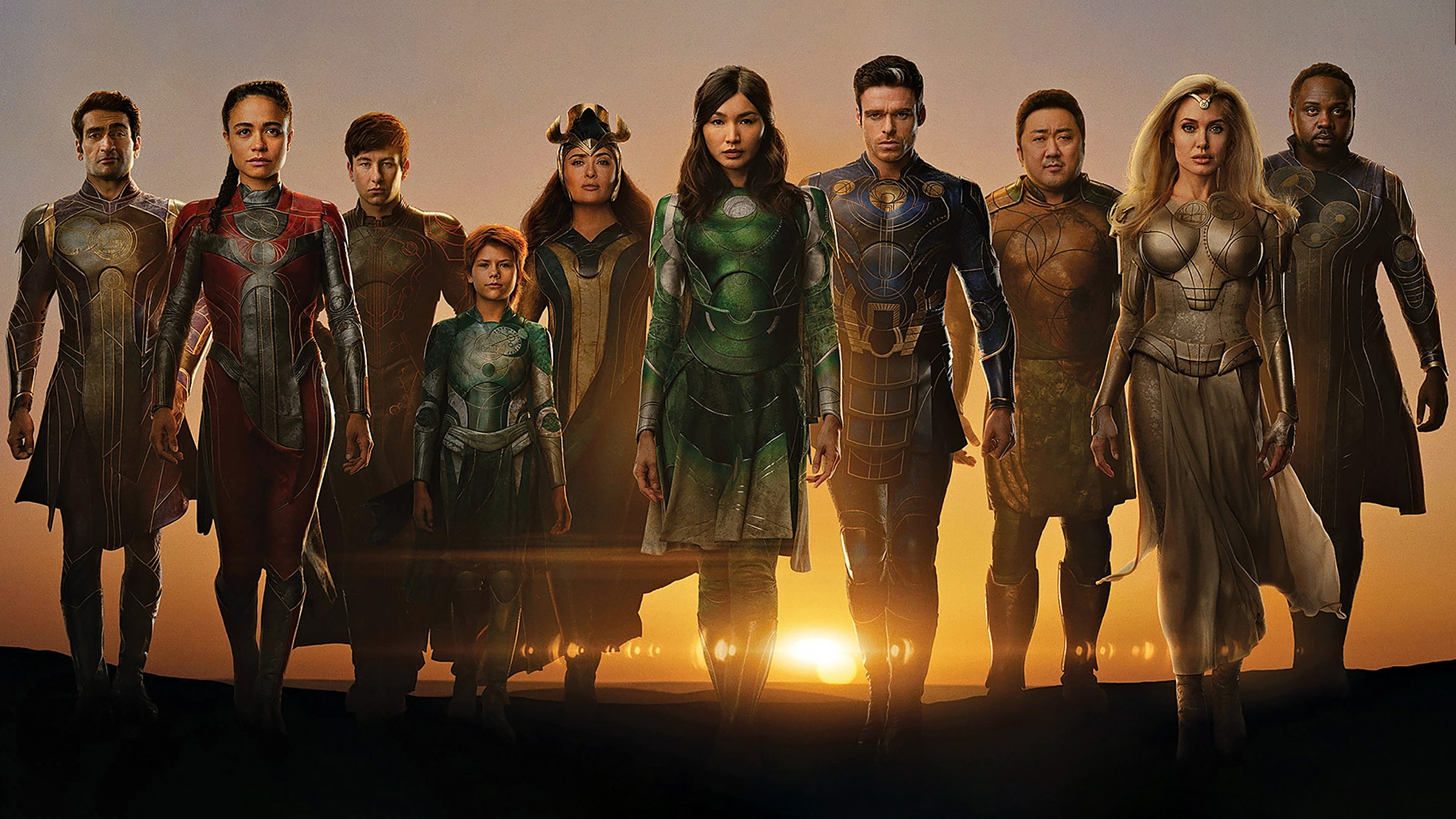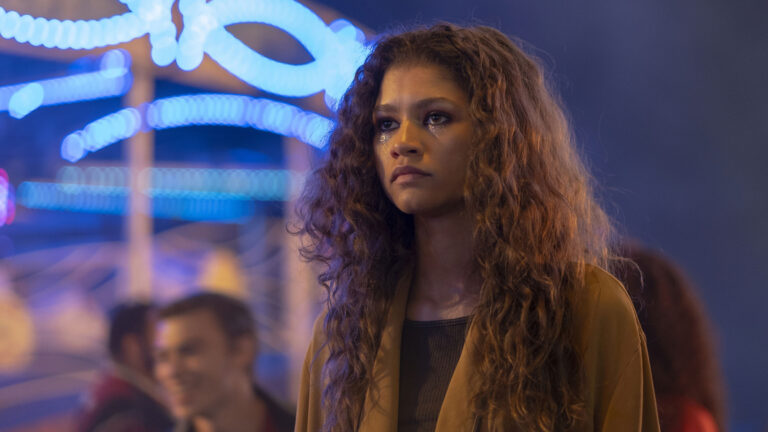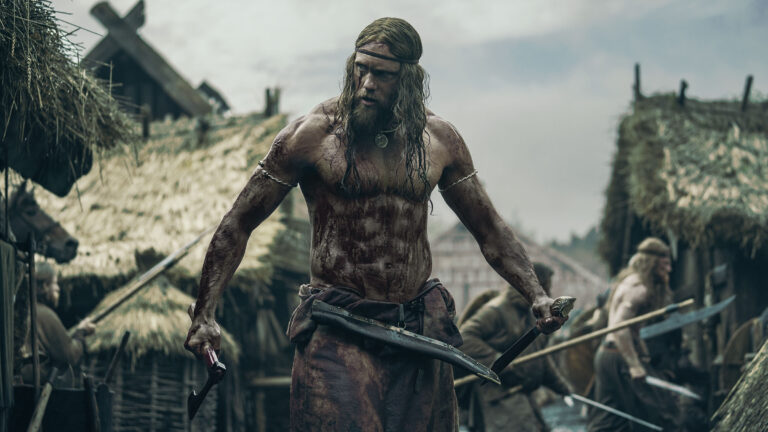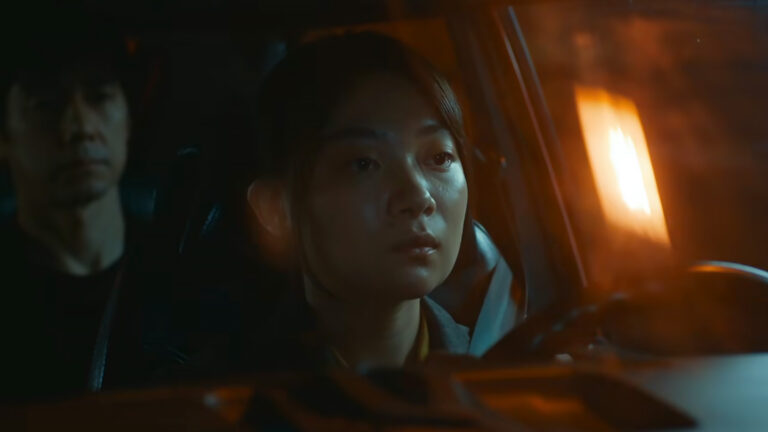Today we’re speaking with Dylan Tichenor, ACE, and Craig Wood, ACE, about their work on the latest Marvel extravaganza, Eternals.
I last spoke with Dylan when he cut Paul Thomas Anderson’s Phantom Thread. Dylan’s work also includes Boogie Nights, Magnolia, the ACE Eddie-nominated The Royal Tenenbaums, the BAFTA/ACE Eddie-nominated Brokeback Mountain, the ACE Eddie/Oscar-nominated There Will be Blood, and the ACE Eddie/BAFTA/Oscar-nominated Zero Dark Thirty.
(And I have no idea where there weren’t nominations for his work on one of my favorite movies, The Assassination of Jesse James by the Coward Robert Ford.)
Craig has also been on Art of the Cut before for Ant-Man and The Wasp and Guardians of the Galaxy. He’s won an ACE Eddie for Pirates of the Caribbean: The Curse of The Black Pearl, and has received nominations for the sequels, Dead Man’s Chest and At World’s End alongside Rango and Guardians of the Galaxy.
Craig has been working as an editor on film, TV, and music projects since the late 1980s, including projects for Peter Gabriel, Tom Petty, and Janet Jackson.
Listen while you read…
HULLFISH: The two of you have both edited very different movies from each other. How did you both end up on this?
WOOD: I guess that Marvel suggested me to Chloé [Zhao] and we interviewed together and liked each other a lot.
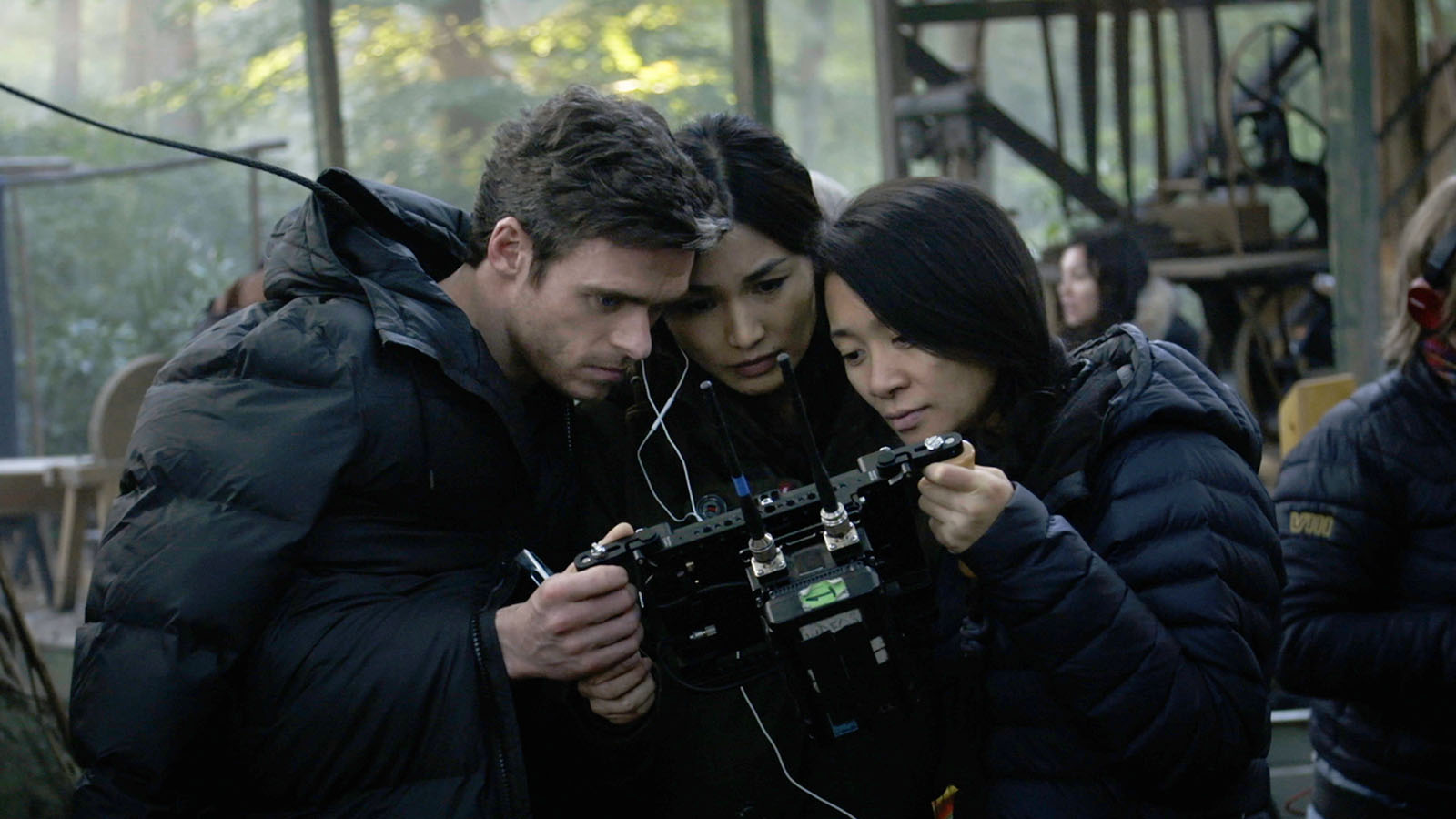
HULLFISH: Dylan, what about you? Did Marvel call you?
TICHENOR: I received a call from Marvel and Chloé Zhao, and I had a long Zoom meeting with Chloé that was fantastic. I knew her movies but thought that she just had a really exciting vision for the project and a lot of energy and enthusiasm. I was really happy to be part of it.
HULLFISH: Would it normally just be a director that would call you, or is this more of a producer decision?
TICHENOR: From my perspective, it’s producers and directors but mostly directors. Certainly, with Marvel and other studio projects, you go through a mini gauntlet where you meet the head of post and a VP, depending on how important things are. I sat down with the head of Warner Brothers Studios once before a project, so I ran the gamut. But certainly Victoria Alonso and Chris Russell run the post over there, and I met with them as well.

HULLFISH: Chloé Zhao edited her last movie herself. What was she like as an editing collaborator?
WOOD: The first cut of the movie was done while Chloé was actually directing, so she was pretty much not involved. Occasionally, we’d see scenes and talk about them together, but mostly it would be just up to Dylan and me to come up with the first cut, which I always think is a great thing for a director to be able to look at their film in one piece, react to it fresh, and just ask, “Is it even approaching what I had in my head when I was shooting it?” She does bring quite an editor’s perspective with her as a director, and that’s incredibly useful.
HULLFISH: That obviously comes out further down the road as you’re watching the film in context. Dylan, can you speak to that sense of her as an editor?
TICHENOR: Her films before Eternals have a very strong, fundamental style. It’s a little bit docu-drama; she uses a lot of non-actors, and she often takes real-life stories and then dramatizes them without too much hyperbole. She did that with Nomadland, which is from a book.
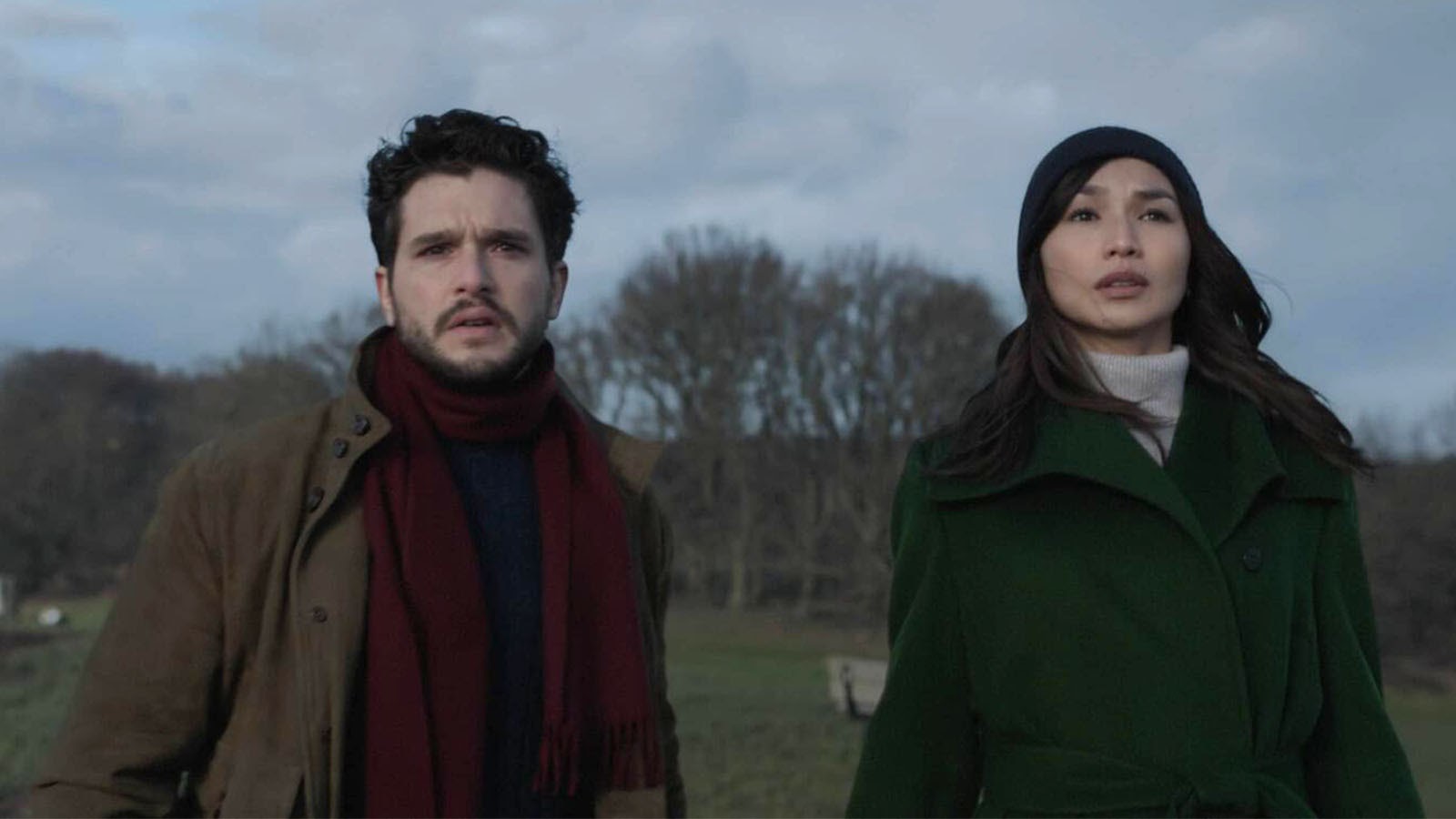
I think her editing style comes out of that. She’s mainly focused on getting all the little character bits in there that she would like to inform the performance, however that can happen. That’s mainly what she would focus on, and she would go through older cuts to see if we went off the rails at some point or if there was something interesting that we left by the wayside. We did myriad versions of many things.
WOOD: Deciding which of those little moments to include was the hardest part of it. We did multiple versions of some sections of the film to just get the balance of the characters and their relationships right.
TICHENOR: Chloé is a very sophisticated film watcher. She’s super smart, obviously, but she understands film language. I think the three of us tried a great many things and went around in lots of circles, but almost universally I think you could say that we agree that things were worth trying. We understood what she was trying to do when she came to us with a thought. She understood what we were trying to do when we presented things to her. So, in that way, it was very much like banging things around in a cutting room.
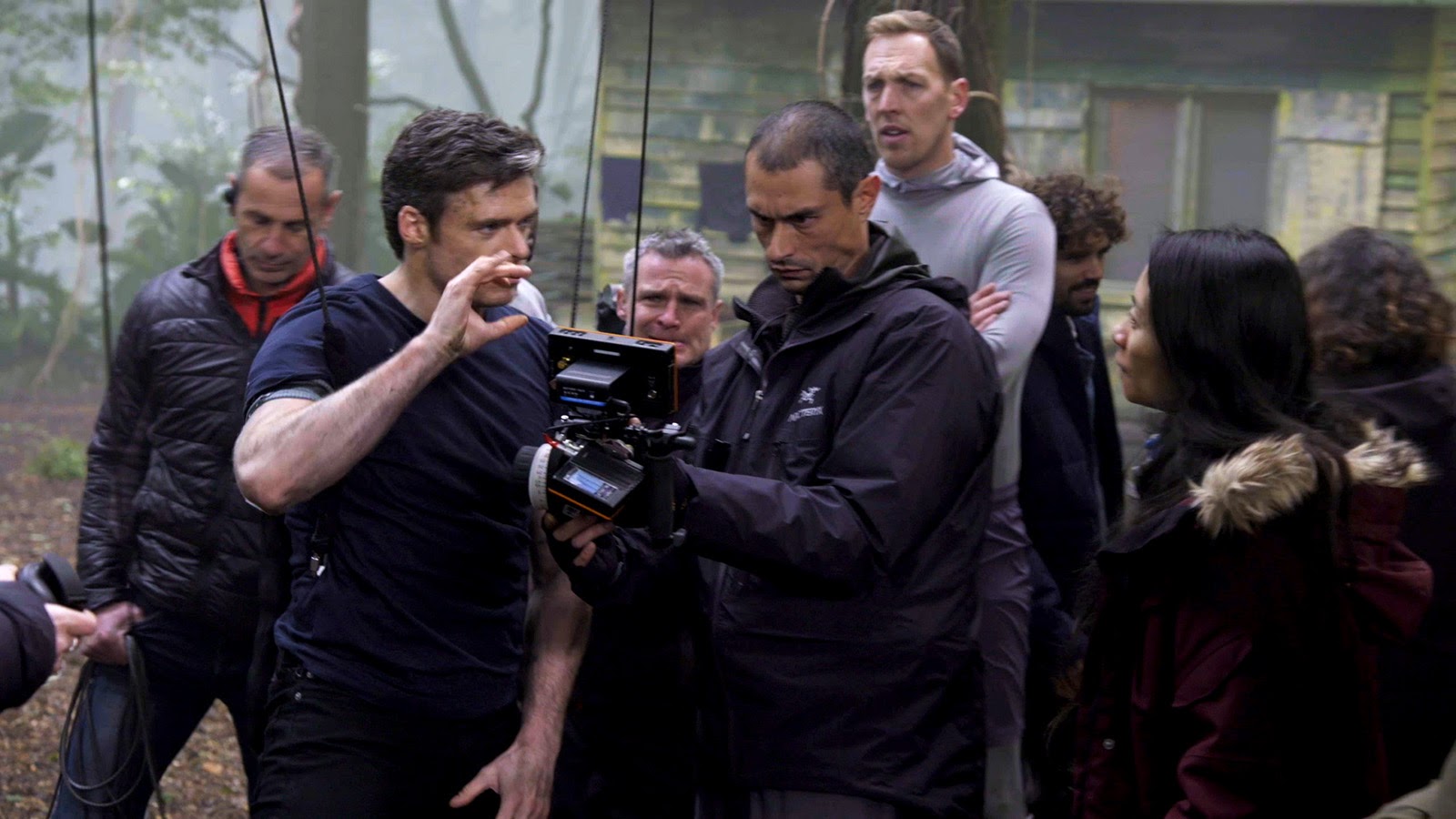
She was a director with a more in-the-trenches sense of editing. It was really useful to be honest because often she would present her ideas to us as sort of mini cuts or rough cuts. She would say, “I was thinking this part from the assembly, and this part from that, and this part from this other cut. What if we use this take instead of that take? Here, I’ve thrown it together and it’s sloppy, but does this idea grab you?” Then, she would let us take it and do what we wanted with it, but it was a good shorthand for her because I honestly think she is more of a visual thinker and communicator.
WOOD: She sometimes just had to push it around herself by actually going in and seeing what was available by looking at older versions. Often our very first cut of the film would come back again. Many of those scenes became the final version. There was no ego involved. It was just about what we liked.
HULLFISH: You start with something, you move on to a different idea, and you might come back to that original idea, but there’s a value at least in attempting some other ideas.
You have to go around the back of the barn to realize there’s nothing there for you, or to find the thing that you left behind originally.
WOOD: Well, there are other things that come out of that journey like the things that go around that idea. For example, an idea functioned differently when it was in the film in its long-cut form than after we’ve moved a bunch of other things around. That original version of this piece might be much better in a different context.
TICHENOR: To your point, Steve, you have to go around the back of the barn to realize there’s nothing there for you, or to find the thing that you left behind originally. Trying other ways to skin the cat is always educational. You may end up going back, but you learn something in the journey without a doubt.
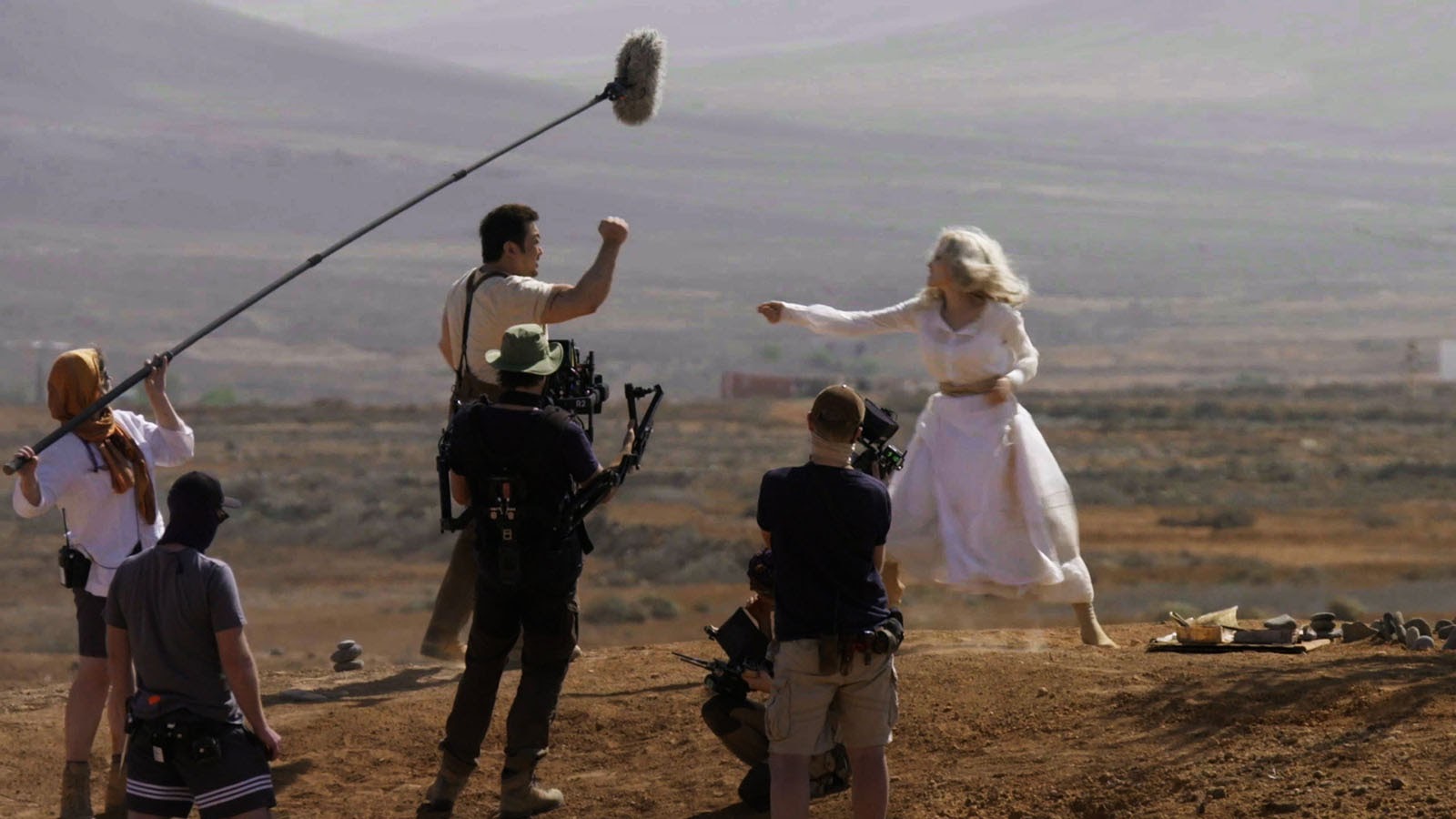
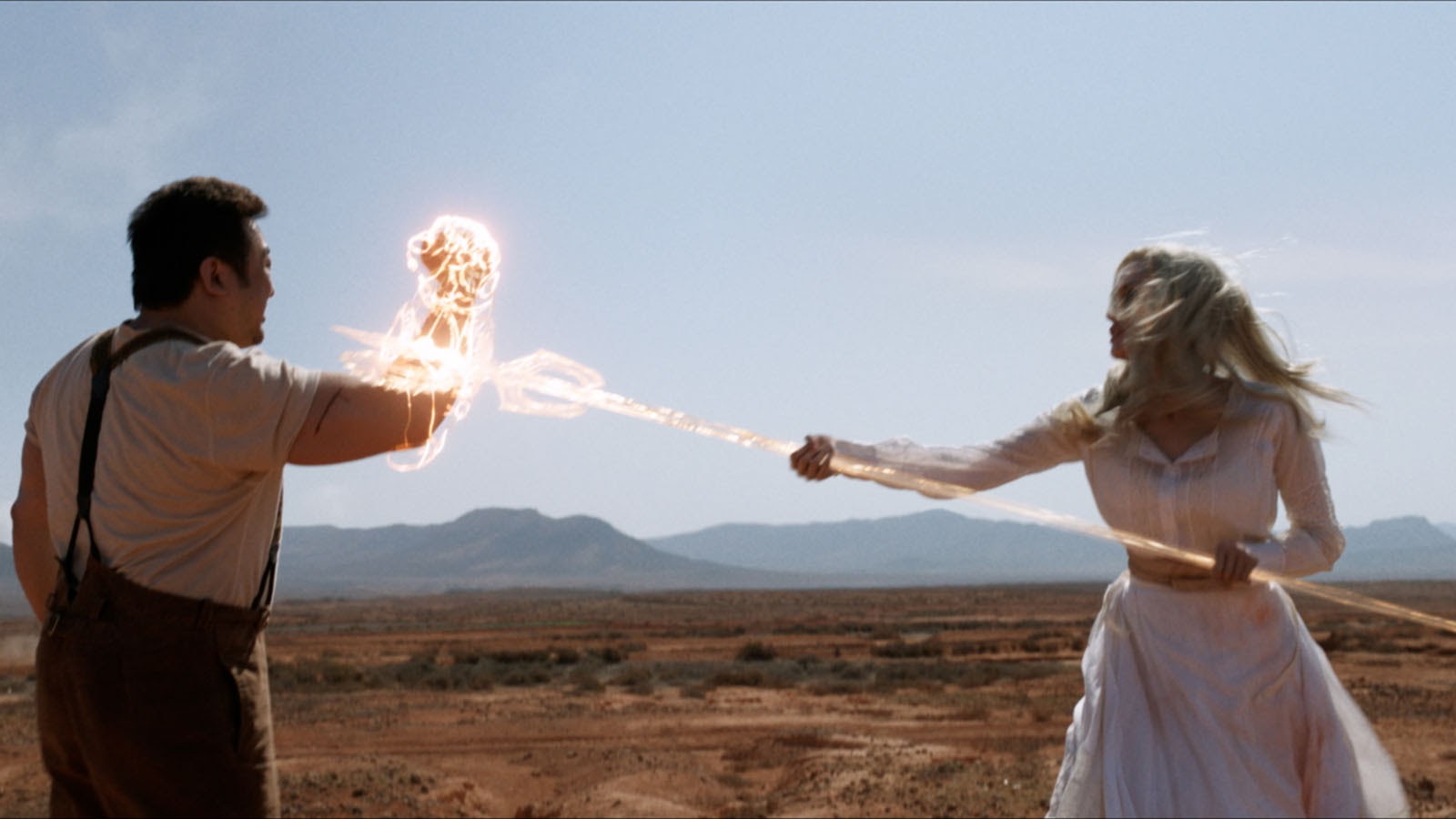
HULLFISH: Do you feel like Chloé’s communication is different from a typical director because she edits?
WOOD: Not really, other than the fact that she likes to do some experiments on the side. I haven’t had that from a director before. That type of communication is new, but the way we talk about things is still about the ideas and the way the characters work and all the things directors talk about.
TICHENOR: She comes at it from a writer’s point of view as well, and often that’s the stronger angle. Even throughout editing, she’s still coming at it as a writer. Arguably, she edits like a writer. As I said before, I think she lines up the things that she wants to convey, and that’s what the edit is. She’s emotional and also cerebral, as both of us are as well.
HULLFISH: How much do you two guys feel like writers?
WOOD: I always describe editing as the final rewrite of the movie. We’re often asked to write lines to link things because we’ve taken something out. A lot of writing falls to us and the director in the post-production process.
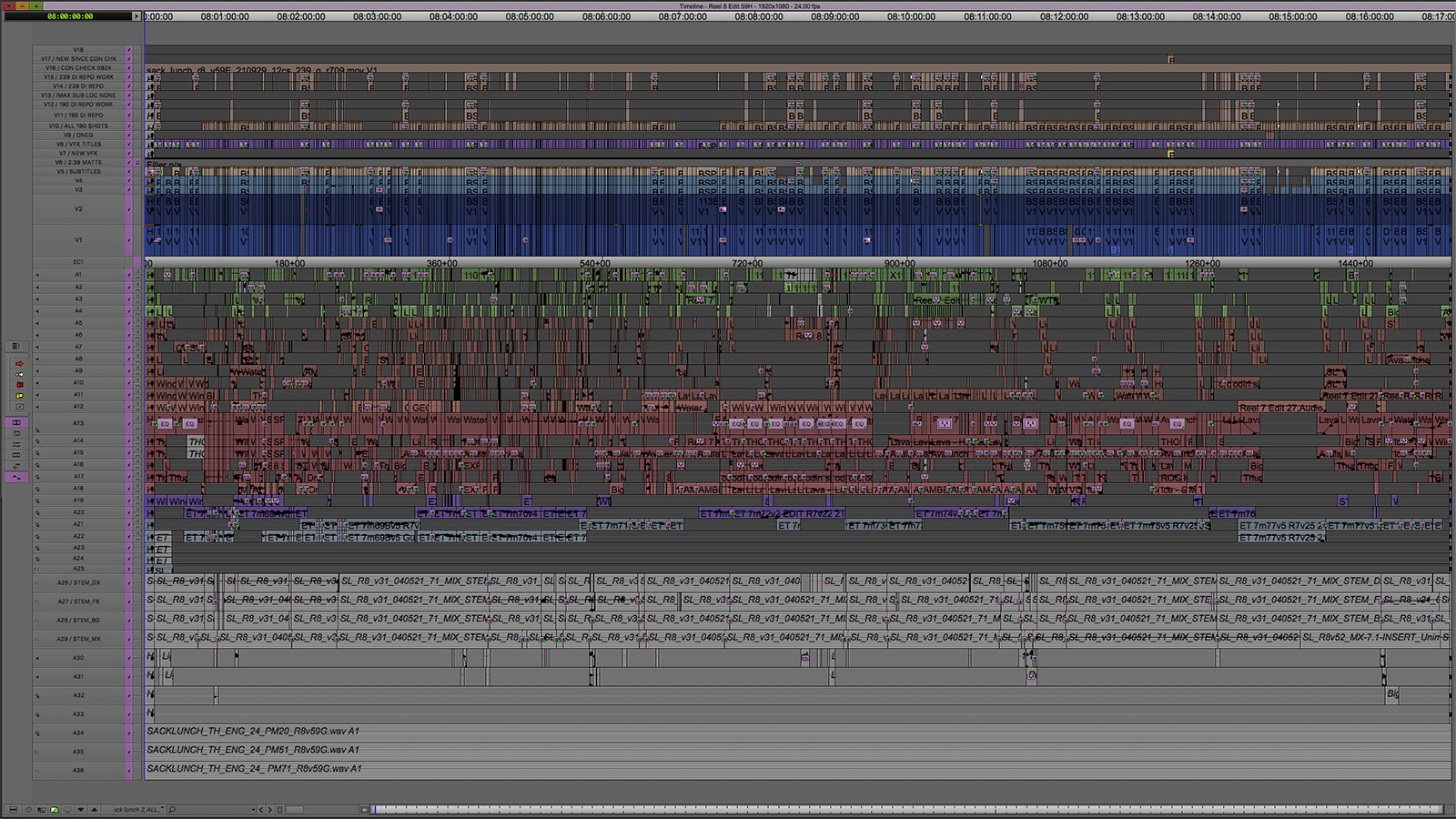
TICHENOR: Lines, character motivations, backstory, story plot…a lot of writing happens in editing, as you know. I think in movies of this size and with this malleability, not only is Marvel unafraid to do additional shooting and get things if needed, there’s often more opportunity because we can think of shots and sequences and then actually make them in order to tell the story better.
One of my great joys I look forward to is talking to the writers usually after or towards the end of the process where they see, “Oh, you guys did all this stuff,” and not in a sense of we just peed in their cat box, but more that we’re all working on it together. You guys did the first leg, we did the second leg, and here are the ideas we came up with to solve the problems that we’ve all been wrestling with. It’s like meeting up with your World War II buddies who knew what it was like to be in the trenches. I would say more than almost anybody the writers understand what we deal with in the cutting room.
WOOD: That was certainly the case on this film. They were curious to see the finished film and see how we finally solved many of the problems that they had throughout the process. They had gone through many of the solutions that we then came up with again in the post sequences.
TICHENOR: Not only did Chloé go back digging through older cuts, but she also did that with the script. She would go back to earlier versions because we were trying to solve things that people had been thinking about for three years. Often—before you’re crazed, panicked, exhausted, and confused—you come up with really organic, strong ideas, and they’re always worth looking at.
WOOD: Chloé would go back and say, “That was what we were originally trying to do. Let’s get back to that.”
TICHENOR: When you’re telling stories with really big moving pieces in terms of plot, character, and time jumps, things just work differently once you’ve put it together.
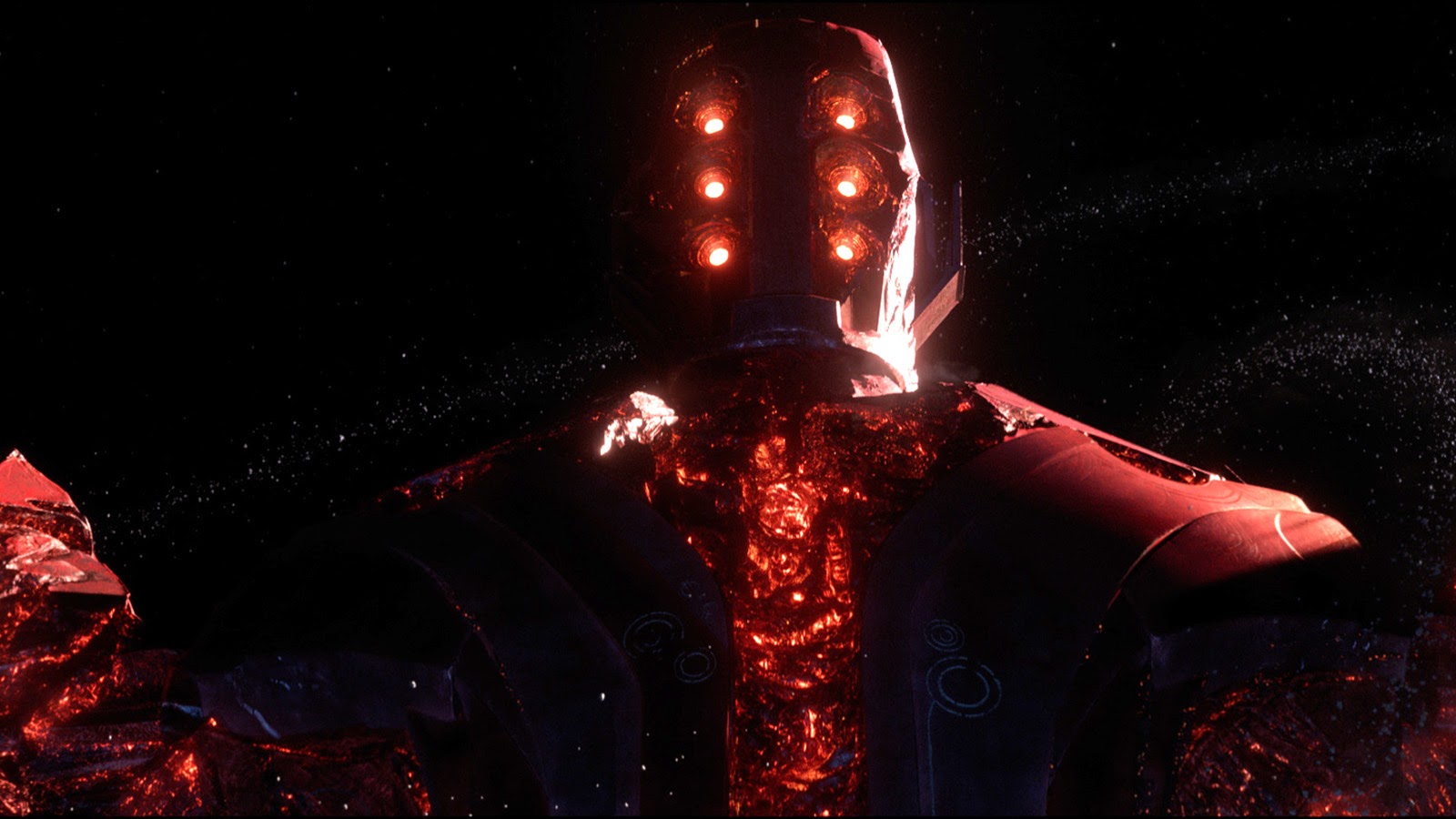
Certainly, with Marvel there is an expected rhythm to the storytelling. The groove in the road is really well-worn after 25 movies, and rightly so. It works. It speaks to people’s appetites. Imagine being in a car in well-worn ruts, and you try to turn to go a little bit outside the rut, you’ll feel that, and then you pop out and say, “Oh no. Now we’re in a dialogue scene for five minutes. How did this happen?” The balance of backstory, character, and plot was our biggest challenge without a doubt.
HULLFISH: What kind of feedback or solutions did you guys consider to try to keep that interesting and engaging?
Oh no. Now we’re in a dialogue scene for five minutes. How did this happen?
TICHENOR: We were going to hand out a little pamphlet at the screening.
HULLFISH: [Laughs] I didn’t get one of those at my screening.
WOOD: It’s just that you’ve got to love the characters.
TICHENOR: And it’s a struggle. You are constantly adjusting that dial. There’s too much information, not enough information, information at the wrong time, or information at the right time. It is like you’re painting or carving something very delicately, just trying to keep it on track.
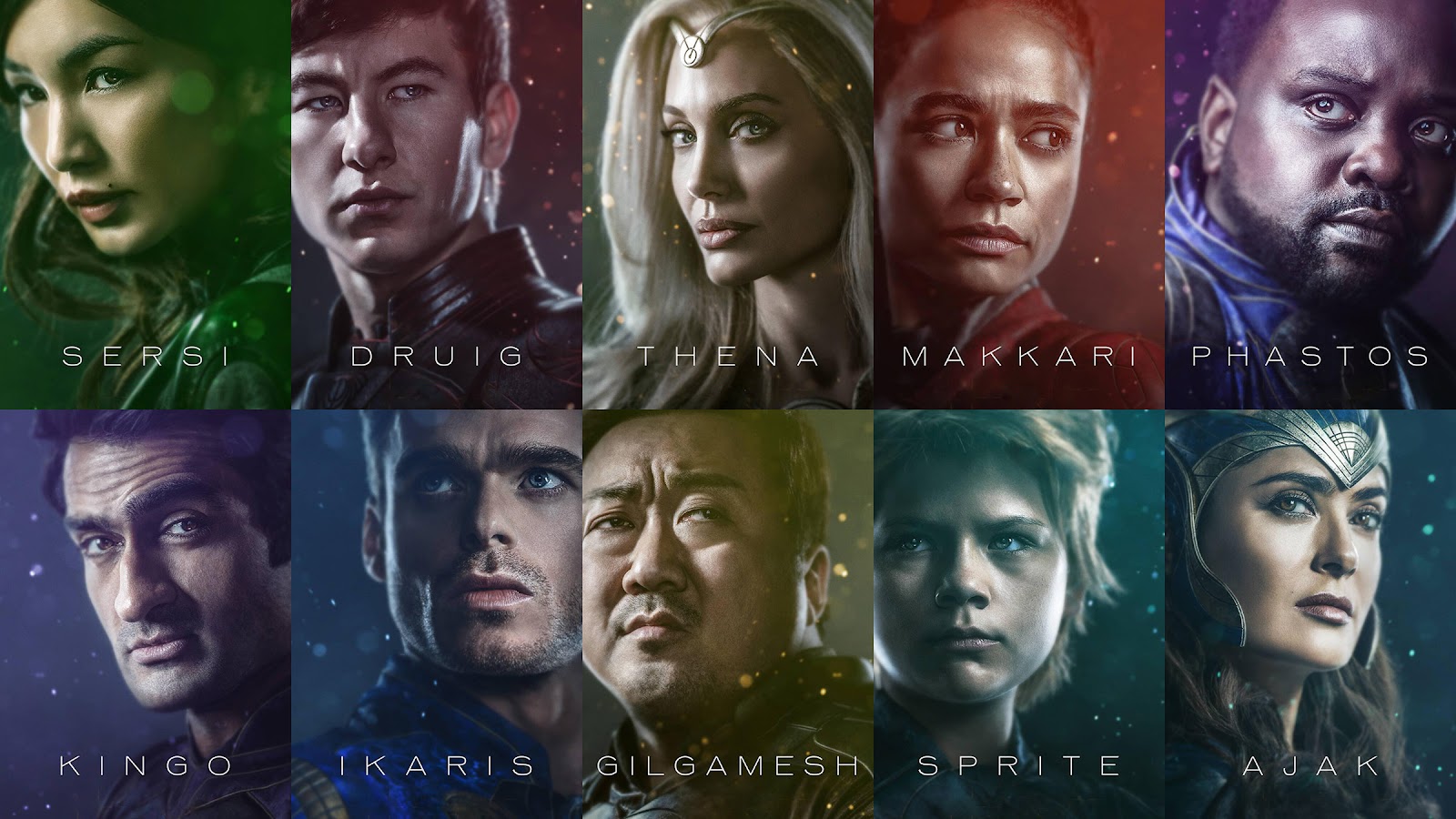
Arguably, it’s maybe a losing battle because of the things we were just discussing about people’s expectations and the needs of the story given the constraints of the genre. I think exposition is a really difficult thing to write well, and a lot of it in this movie is written well, but oftentimes the phrase “info dump” is out there for a reason. You just need it.
People sometimes think, “Oh my God, they stopped the movie to show me all this stuff. What are all these words they’re throwing at me?” Yet, from our perspective, it is the most efficient, least disruptive way to do it. We’ve tried not doing it; it doesn’t work. People are not onboard the bus and the rest of the movie fails.
We’ve tried doing it very lightly and wedging it in, but it becomes confusing. We’ve tried doing way too much, and it stops the movie. We’ve really tried to dial in what you need to go forward and be satisfied. Sorry, there’s a piece of broccoli on the plate.
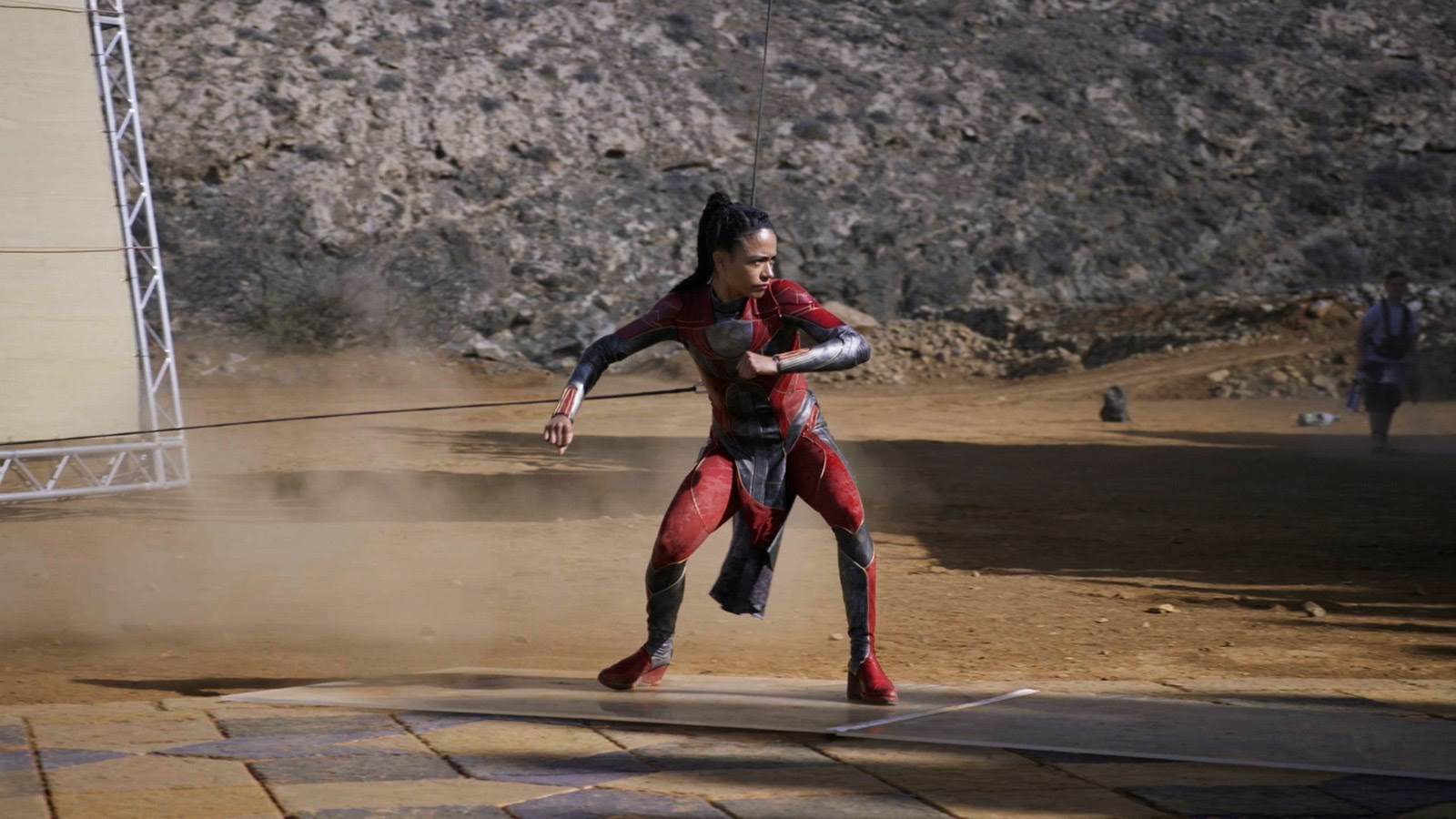
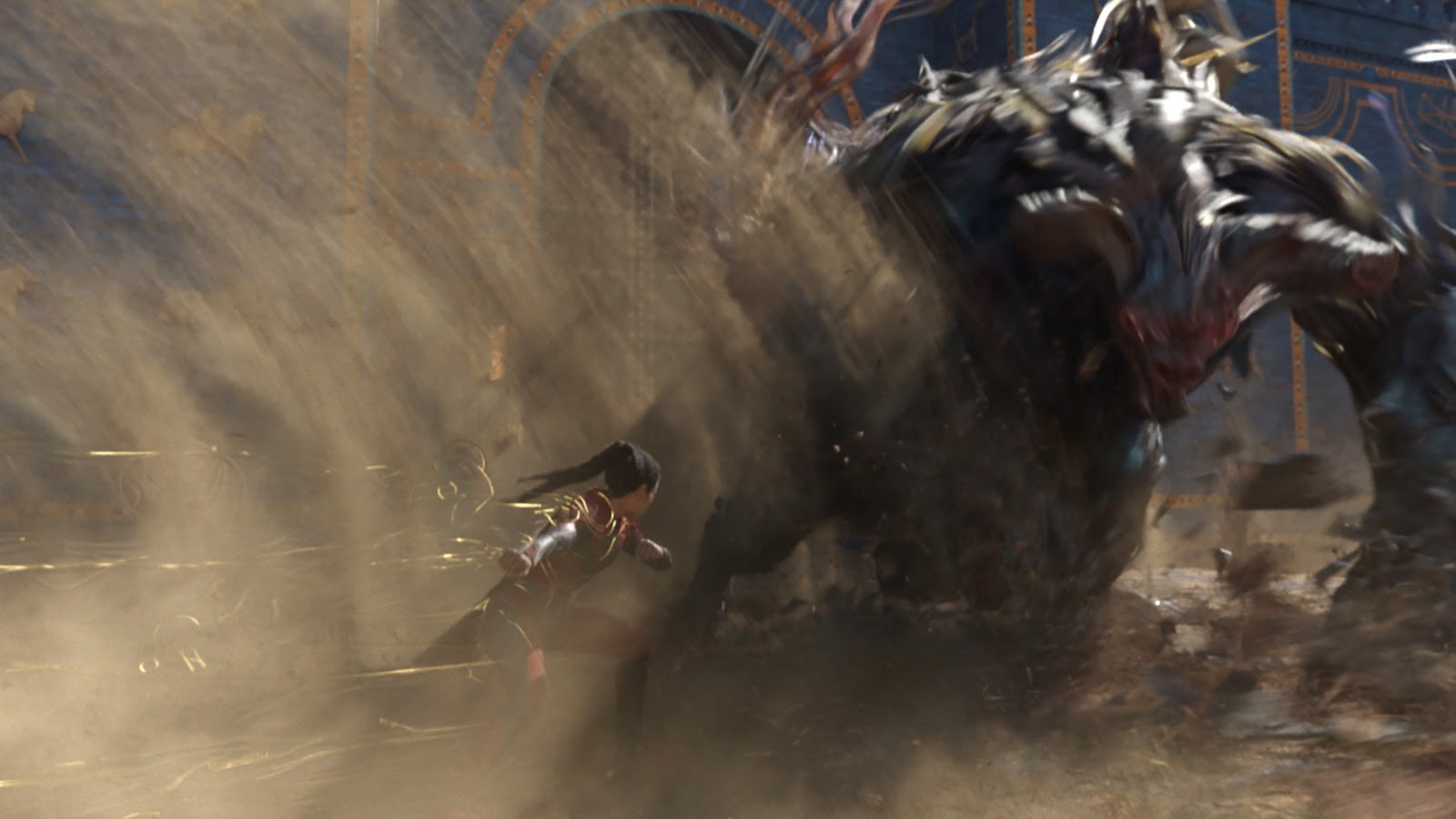
WOOD: When you’re world-building, you just have to because you can’t resort to the expectation of, “This is the world I understand, therefore there’s a shorthand to how much you have to know.” We’re creating a world, so you’ve got to give them the backstory because it doesn’t exist any other way.
TICHENOR: You can do it in a different way, much more organically, but you add another hour to your runtime because that’s what’s required. If you want to not feel like you’re getting an info dump, then that requires us to work it into scenes and it’s the lesser of two evils almost, to be frank about that. Nobody wants to read a movie. In order to tell you the meat of the story, you need a little bit of vegetables.
WOOD: Through our preview process, we evaluated just how much information the audience needs. This amount of information in…too much. This amount of information out…not enough. Sometimes if you give them too much information they want even more, but if you give them just the right amount of information they’re okay with not knowing anymore. They don’t know the things they don’t know [laughs].
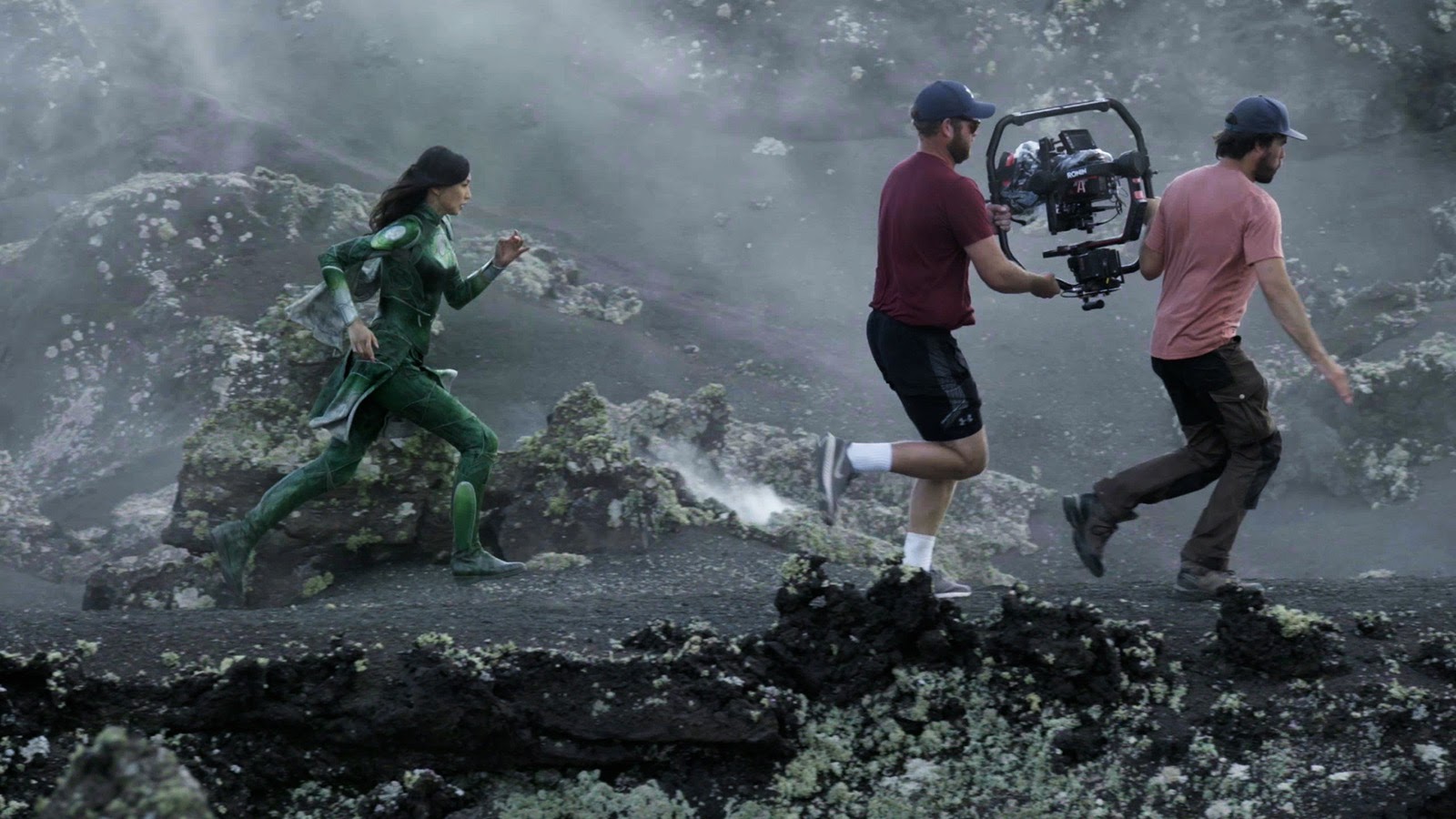
TICHENOR: That’s that balance between having questions that need answering and being confused, and often it’s a razor-thin line because we want them to have questions so that they lean forward and want to watch the story, but we don’t want them to be confused.
HULLFISH: When do you start subbing the previs out of your edit, if it’s in the edit at all?
TICHENOR: I would say, for a movie of this size and this much stuff in it, we had relatively less previs than I would have expected and I’m sure less than Craig would have expected for various reasons, but I think mainly because Chloé works differently. Previs is really essential for working out camera angles and what actions are needed.
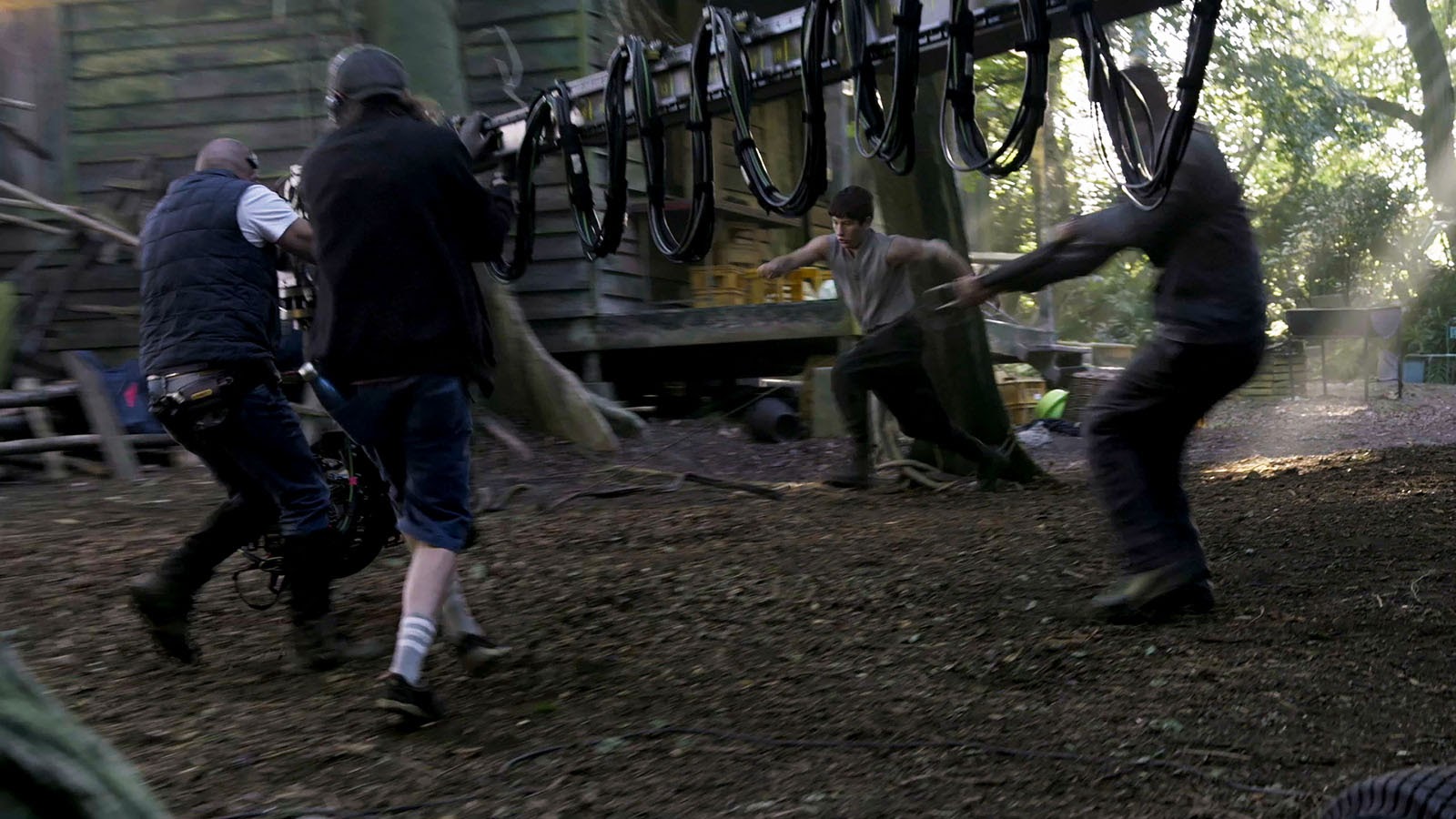
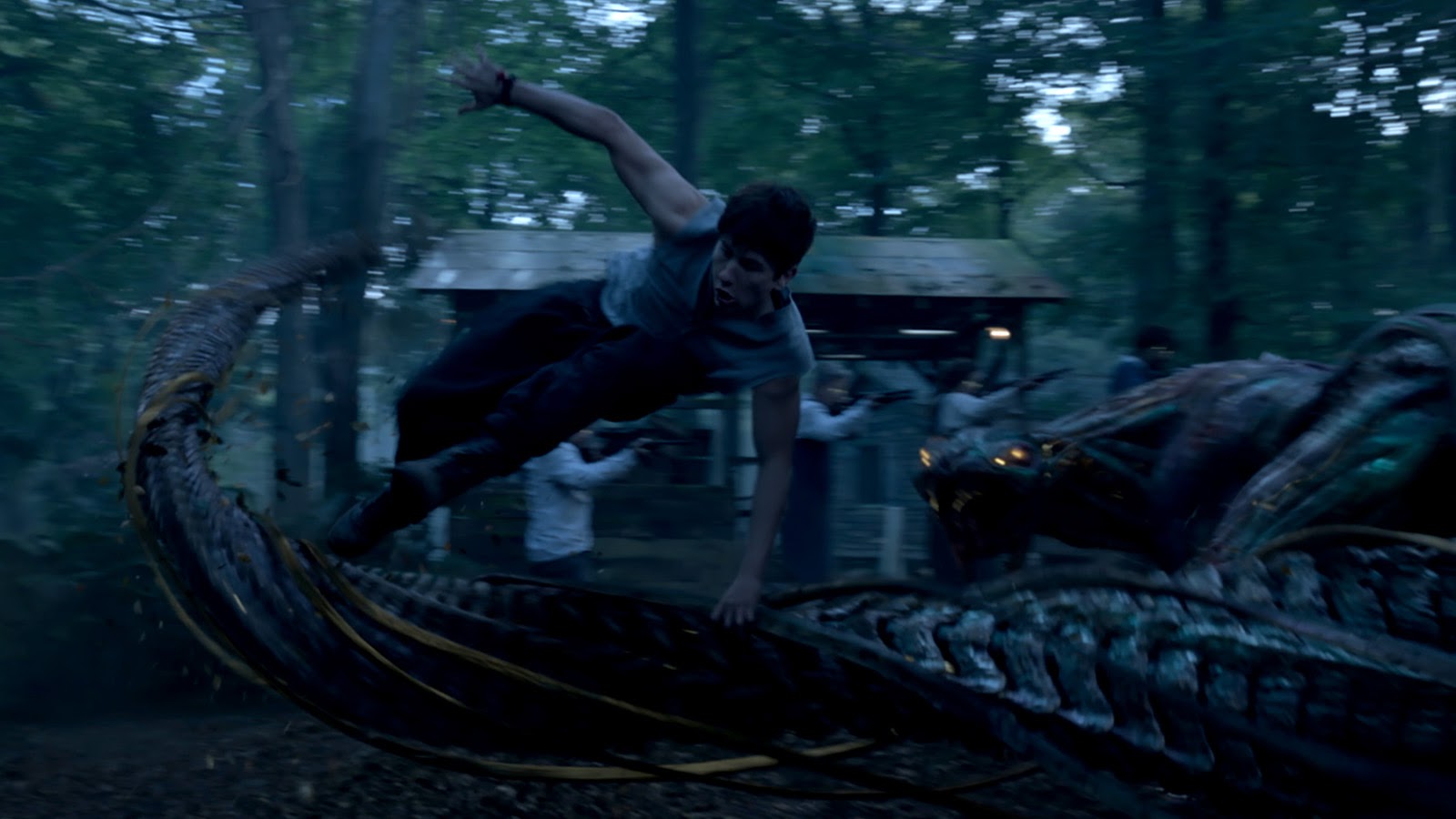
Chloé sees things as a shot that’s real. I think largely until she has a camera with a lens on it and gets a shot, that’s when she can really feel it.
Usually, the process is boards, previs, and then there’s a phase where certain sequences can get stuntvis, where the action is done by the stunt players even if it’s just rehearsal so that you can get an idea of the blocking and what the action is. Then, once it’s shot, there are stunt players in it. Once Craig and I have done our work, re-speeded it, and done all the cutting, then post postvis puts creatures, digi doubles, in the shot so that it’s an actual plate with temporary digital representations in it. Then that gets subbed out as we get versions from vendors.
HULLFISH: It sounds like the early stages of the edit require a lot of imagination from you.
WOOD: Oh yes, but we’ve got the postvis team working with us the whole time. When we need something to actually help us do the story, we can ask for it and actually say, “Can it be like this?” We’re doing a little bit of directing for that while the cutting is happening.
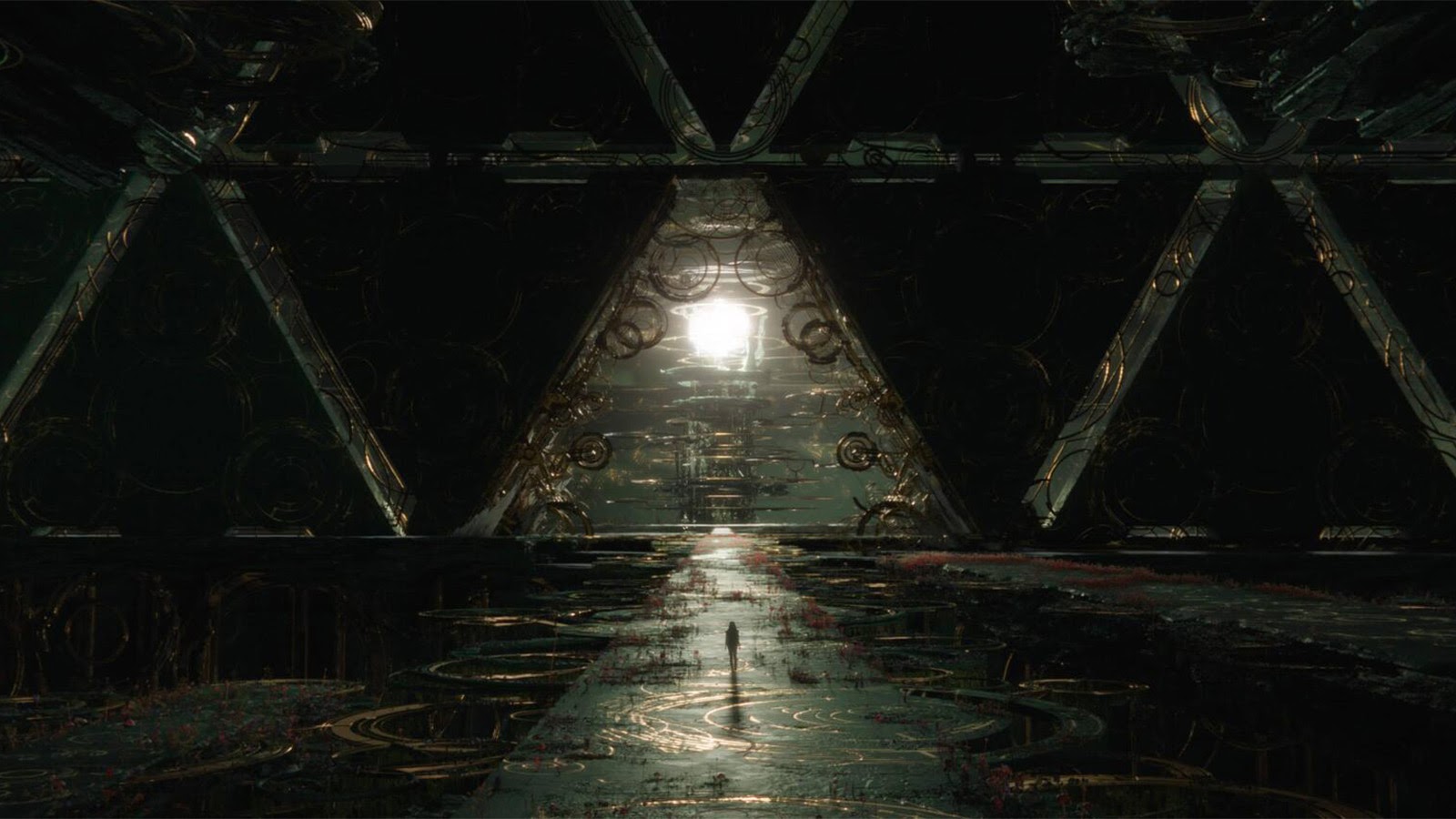
TICHENOR: Big time. A lot of ideas happen in that stage where you’re trying to work out how it will work best. We’re asking ourselves, “Does he shoot first or does the creature jump and then he shoots? Does it land with its paw on one side or the other? How does it work?” You work it out by iterating back and forth with postvis generally, trying to work most of that out before the vendors actually come in.
WOOD: Also we communicate some of our ideas to Chloé. There’s a lot of communication going on.
TICHENOR: Yeah, if we’re talking about stuff that’s happening during shooting, we work out with postvis a way to show the sequence that we’ve constructed, and a lot of that is to show what we think the idea is to the director, the producers, and other department people who need to know. For example, these are the kind of powers that are going to come out of his finger, and then the eyes light up on this frame, and this seems to work. That’s just part of figuring out how to tell the story. As you’re saying, it requires imagination to get the idea across.
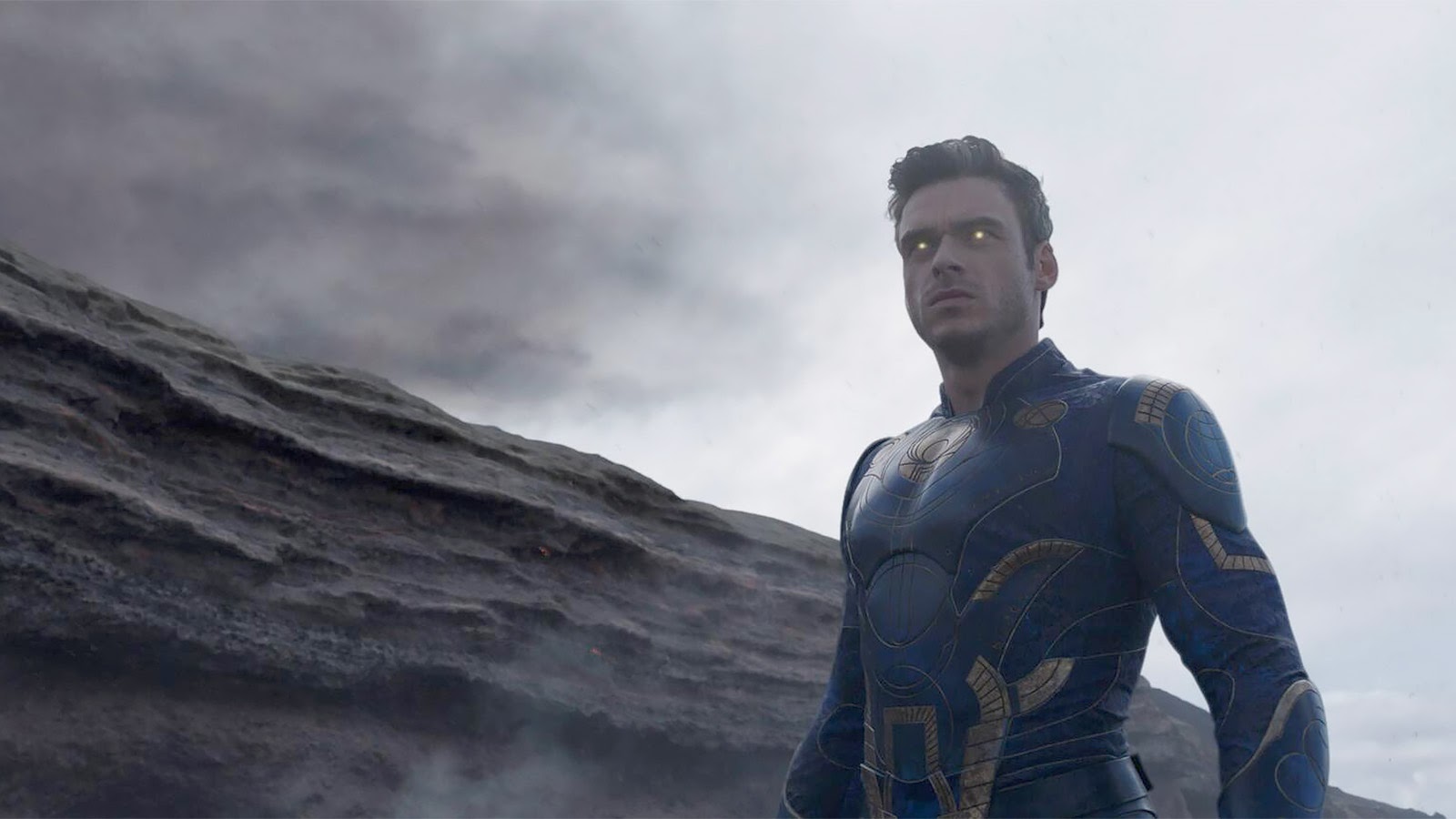
WOOD: This movie was particularly difficult in postvis since we have so many creatures, and that’s unusual in Marvel films. There’s not usually so many, and they all require animation which is much more time-consuming in the postvis realm. So, the feedback was a lot longer.
HULLFISH: A lot of those fantastic visuals were also supported with great sound design. How much were you given by the sound team early on?
WOOD: We were given a certain toolkit, but we borrowed sound effects from a lot of other Marvel films. I created my own toolkit. I put what I thought they sounded like in my head for our film. That helped inform me as to how to talk to the sound department when they were making the real sound effects.
TICHENOR: They take a lot of inspiration from the thinking and temping that Craig and I have done.
WOOD: Another thing we considered was that the effects had to sound different from one another just in a frequency range.
TICHENOR: It’s really hard when you have so many characters with different but similar energy. They all use “cosmic energy” or “celestial energy,” and the end goal was to design them so that if you close your eyes you can know just by listening which character is doing what. We really tried to do that and to make it organically related.
In the middle of post, Craig, Chloé, and I did many sessions with Addison Teague, our sound designer. Then, he would go away, work on, and play stuff for us, taking inspiration from what Craig and I had temped and then building on that to really make it great.
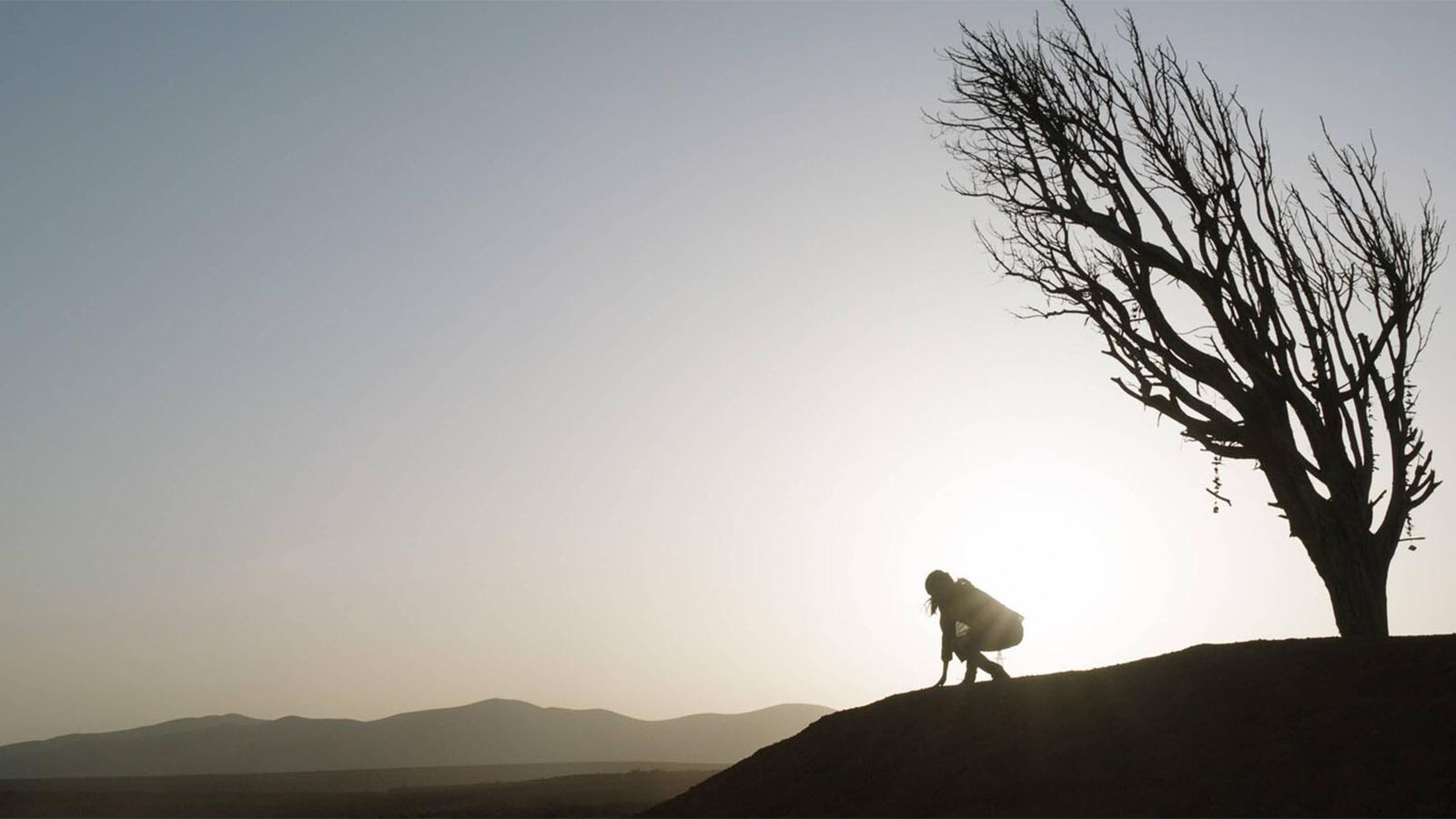
HULLFISH: The story also switches tone quite a bit. How did you modulate those tones and the tonal shifts?
WOOD: Well, it’s probably one of the more difficult things we had to do. Once again, it’s about the rhythm of those things. So, you would occasionally remove a joke that might actually be funny because it spoilt the drama of the scene. Sometimes we would add a joke to get us out of the drama of the scene.
TICHENOR: Related to that, one of the challenges with this movie is the Marvel formula, where there are quips and asides even within the context of a dramatic scene or a tense moment. Marvel fans have come to expect and roll with the funny asides. Honestly, that also comes from comic books, which did that too by adding in a little snarky comment in the middle of something. It was just the Stan Lee kind of style.
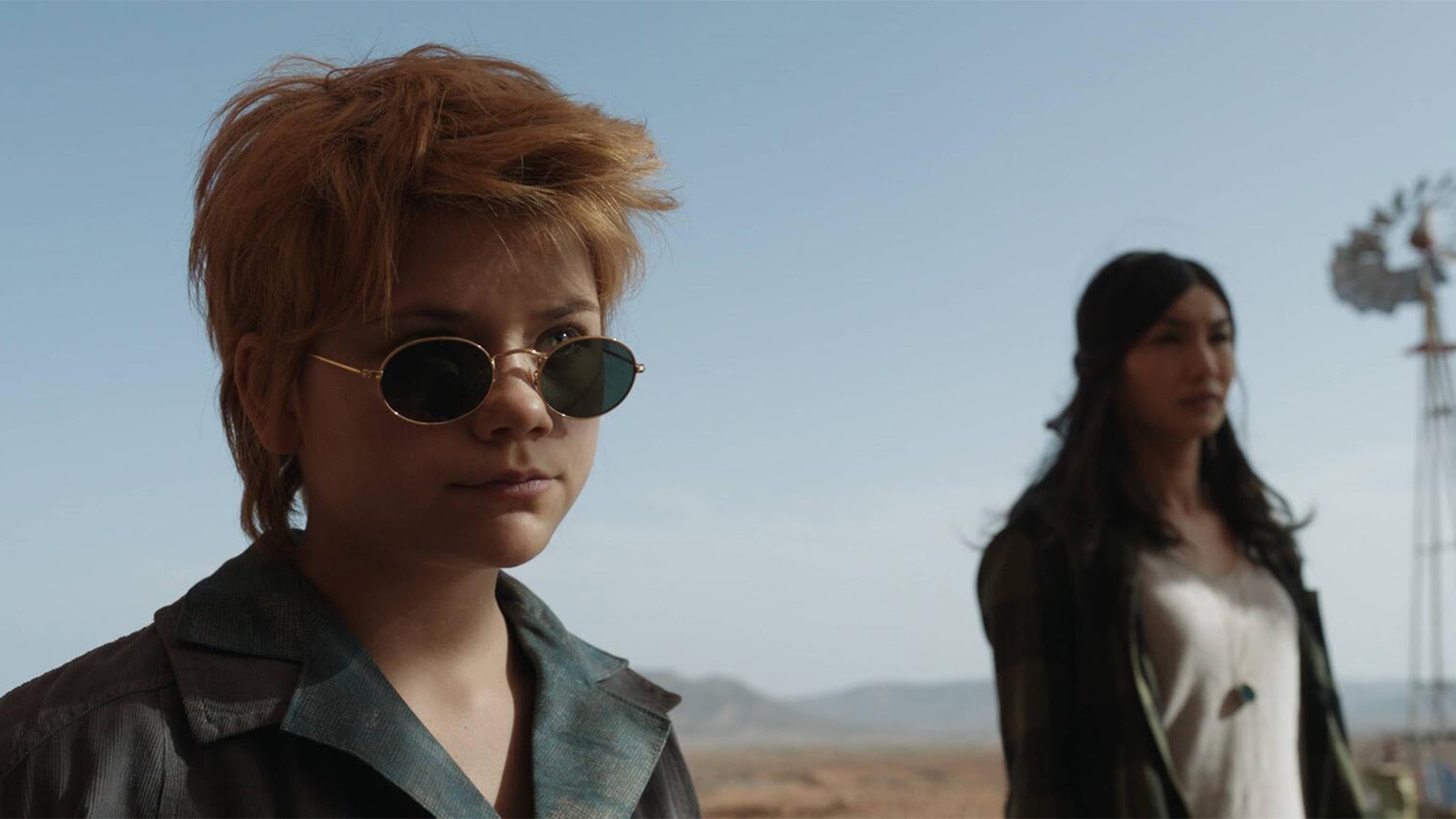
Managing that in a movie like Eternals that has arguably ten times as much drama as a normal MCU movie wasn’t easy. We wanted there to be humor in it and there was room for humor, but I think making those shifts in time period from dark and scary to action with quips within the action made us realize, “I’m in another mode here.” It’s disconcerting in a fun way, but the characters themselves are often pretty serious. So, trying to wedge some humor in there was something we tried a lot.
HULLFISH: How are you guys monitoring visuals and audio in your cutting rooms? Did you need to check it on a bigger screen for pacing or something else?
WOOD: We work in 7.1, so we have that to monitor all the time, but then it’s good to take our Avid sequence of the whole movie and watch it in a screening room.
TICHENOR: With the lights off it’s a different vibe.
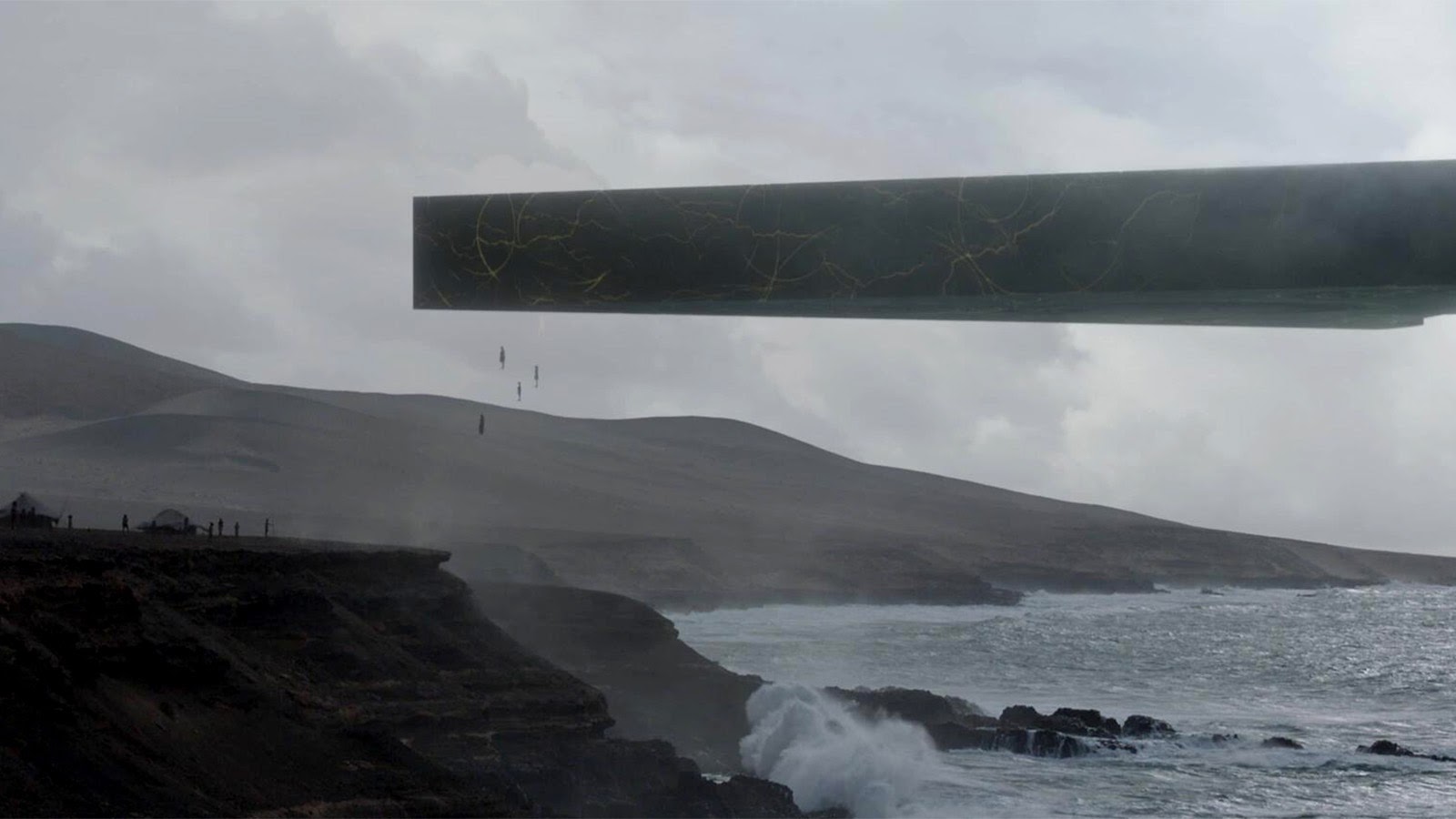
WOOD: It refreshes the way you look at it. You put it in a new environment, and it’s suddenly fresh again. You can judge things better.
TICHENOR: And new ideas come into your head. Whereas, when you’re in the trenches and working with your nose to the grindstone solving problems and coming up with ideas, you don’t necessarily see the big picture, especially in a movie as complicated as this.
WOOD: It was very useful having put the soundtrack together in 7.1 and actually having mixed it before COVID hit. Then, we had to work from home for a period of time just in stereo. Having already mixed it just meant that things had to be balanced to that level. So, anything that we changed could be easily placed in the surrounds but be monitored in just stereo.
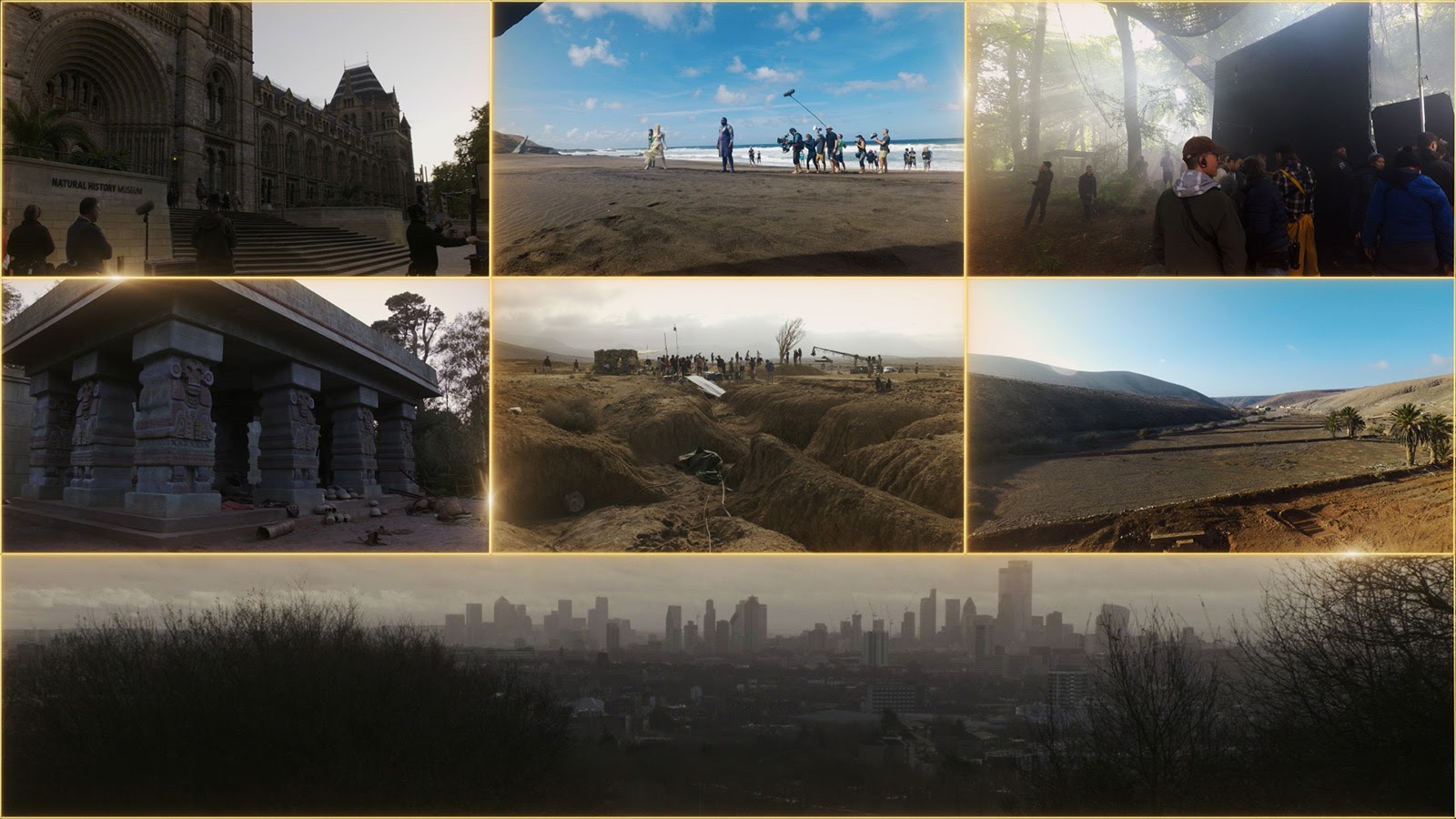
TICHENOR: Craig and I went back to the cutting room leading up to our first screenings to do final touches but also to get into the real audio monitoring situation so that we could make sure everything was where it needed to be. It was just the two of us and our post supervisor Adam [Cole], and it added almost a year to our schedule. We were fully down for two-plus months and then started back. There were good things about that. We all got rest and a little perspective.
WOOD: We could look at it nice and fresh. When we came back, I actually thought, “This is a good idea. Let’s do this on every project.”
This is a good idea. Let’s do this on every project.
TICHENOR: [Laughs] “All movies should do this.” We did it here, and that was very helpful, especially to VFX. Actually, later in the process Craig and I went away and there were still a great number of shots in the pipeline when the cut was basically done, but we had to let them catch up because not only were we saturated, meaning the studio people, but all the VFX houses were too because everything was down for a year and everybody went home went or to other jobs.
Then all these movies that were backlogged in the pipeline, especially at Marvel but also across the board, just came out. So the VFX houses just got slammed.
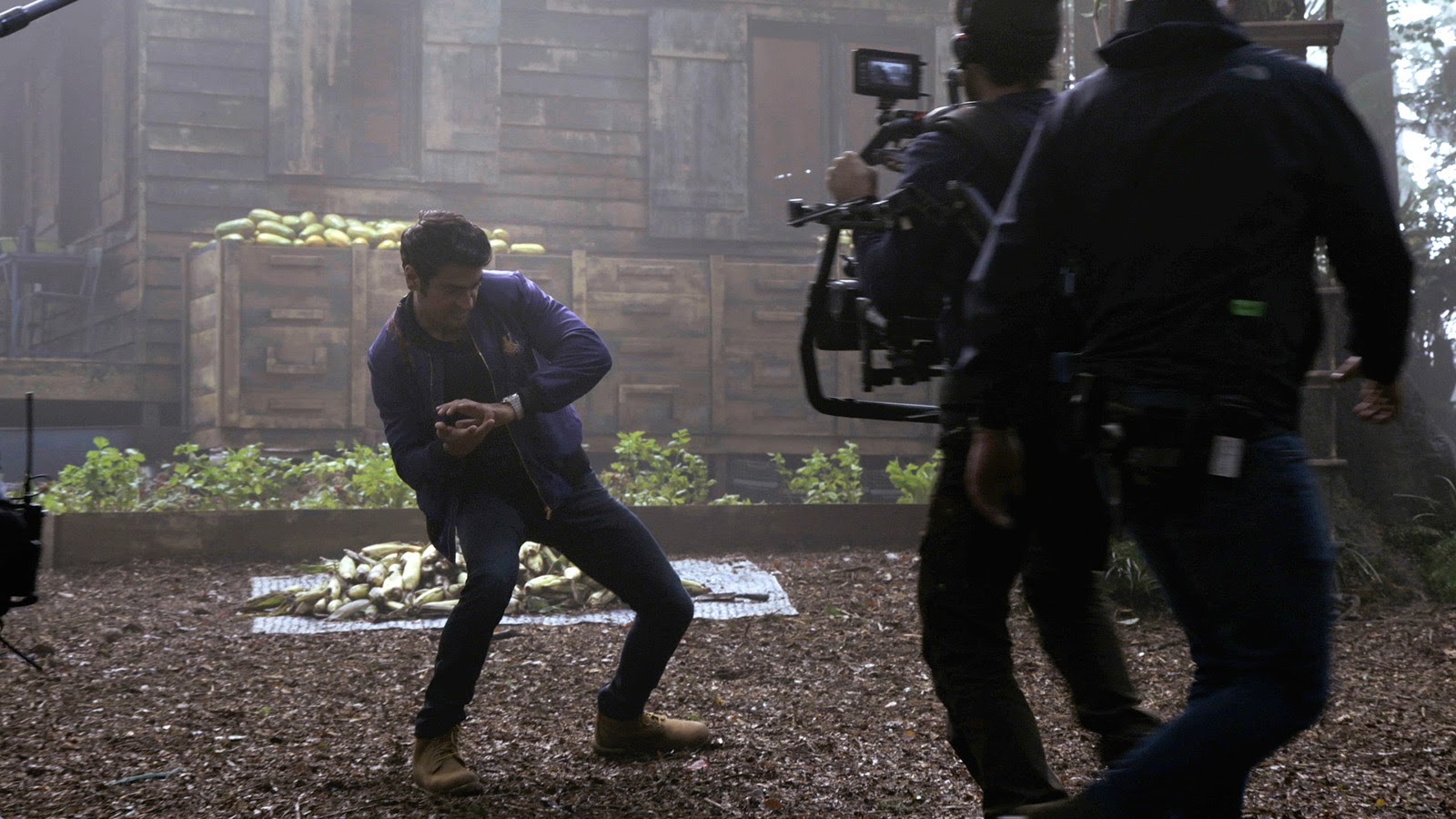
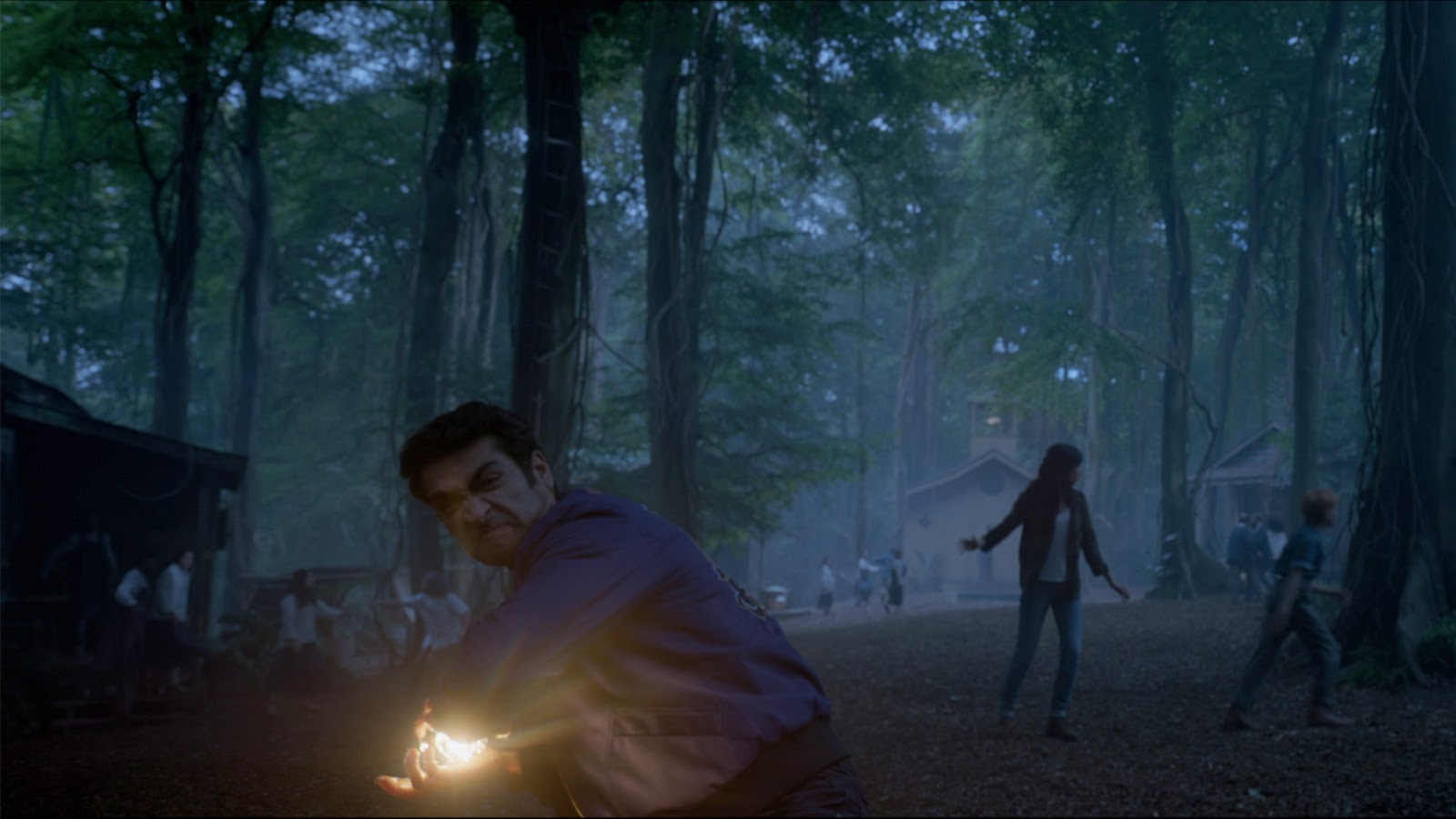
HULLFISH: I have never worked on a film of this size, and I know on smaller films that I’ve worked on I’m very much the manager of the process. There’s a post supervisor, sure, but I feel like I’m in charge of the assistants and the workflow. On something of this size, are you being managed? Do you just have to edit, and then someone else is figuring out schedules?
WOOD: It’s yes to both. I at least like to be managed a lot.
TICHENOR: We have to be because we do have to nose down, do our work, and keep our head focused. Craig and I have very similar styles I think where we have opinions and contributions to make to the designing of the schedule and what’s going on based on what makes sense, what’s fair, and what’s sensible to the myriad of people behind us in all the departments from our assistants, VFX, music, and sound. They all follow behind us waiting for the reels, the changes, and the direction. So, we are very much a part of that management.
Adam Cole, our post supervisor, was just amazing. He managed the schedule with the other people in the post department, and they did a fantastic job.
WOOD: Are they finished at this moment?
TICHENOR: Nope, they’re not. I actually heard there’s a couple of subtitles changing this morning.
WOOD: Oh my goodness.
TICHENOR: Well, it’s a really funny thing because Lauren [Ridloff], who plays Makkari, speaks American Sign Language, which is a unique challenge. I’ve had deaf characters speaking sign language in a movie before, but what you want to do is make sure that the way you subtitle them is very accurate. That’s the goal. However, as we do with speaking characters and everybody in movies, sometimes you have to change the line a little bit by adding a word or changing a word to give it a slightly different inflection because that’s part of the story that you’re trying to tell.
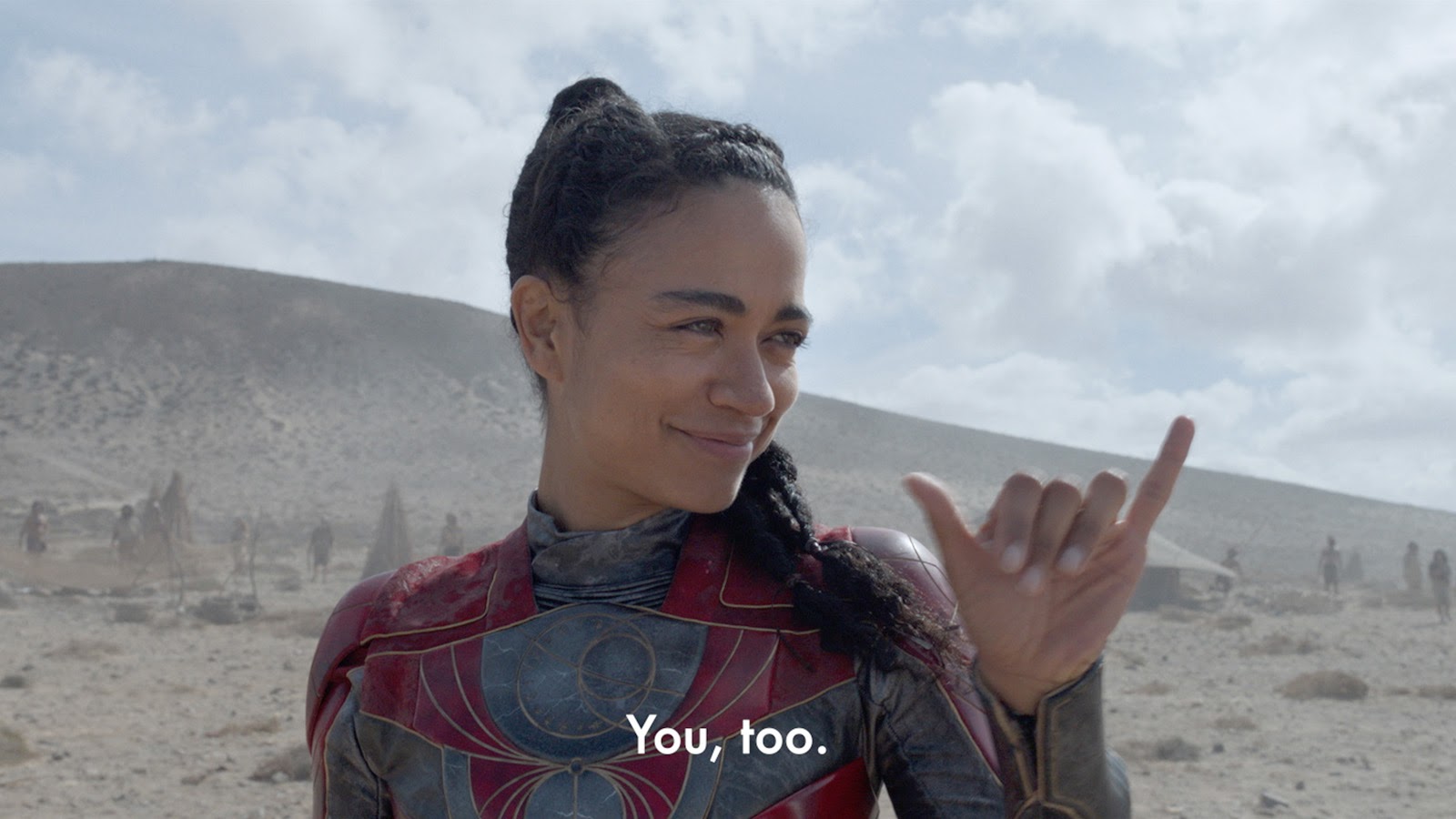
For example, Makkari says, “I had to go get this in order to trade,” but we needed her to say the word “tablet,” which they didn’t realize on set. So, we add the word “tablet,” but then Lauren the actress is not actually signing “tablet.” So, that’s actually what’s going on this morning is they’re trying to make sure that Lauren is happy and doesn’t feel misrepresented, just as if we try to shove a word into a speaking actor’s mouth which we do all the time to make things happen.
With a signing person, you can’t really cut off-camera. So, it’s a different dynamic for us as editors to try to make that work.
With a signing person, you can’t really cut off-camera. So, it’s a different dynamic for us as editors to try to make that work. We were extremely thoughtful about it and cautious and checked it all with Lauren and her people so that everything was exactly correct.
WOOD: In my mind, it’s the same as what you do when you’re translating from another language. It’s as precise as you can be, but because it’s a different language, it’s got to be slightly different to make sense of it. Then, we’ve got Babylonian which three people on the planet actually know, and we tried to be true to those three people.
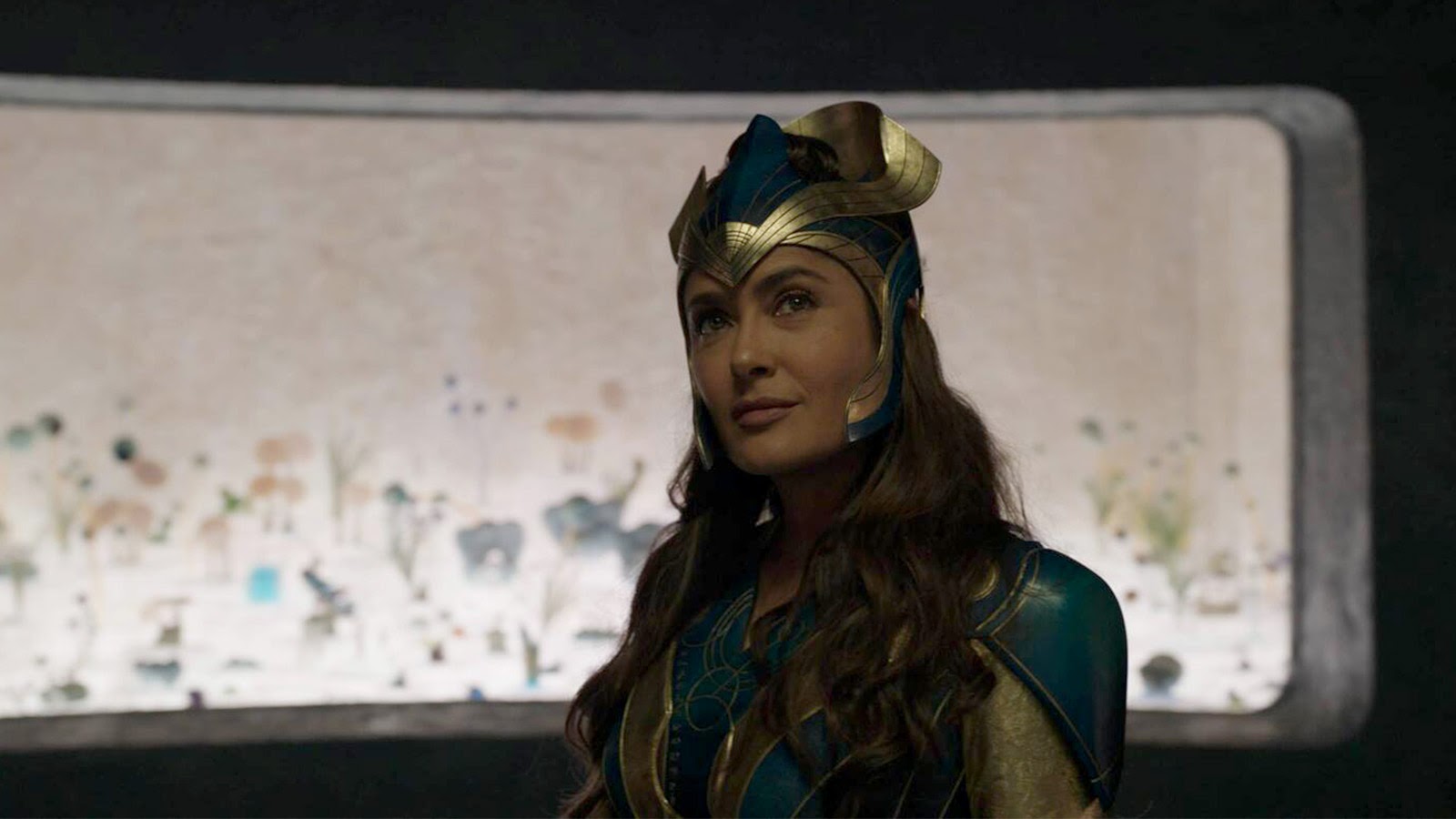
TICHENOR: That’s right. People are speaking real Babylonian and we had a person translating. I learned some Babylonian to try to help get through that. We spoke Babylonian to each other for about two hours. It was quite impressive.
HULLFISH: How did you two collaborate during dailies, and then how did that change once you started breaking the films into reels and seeing things more in context?
WOOD: When we’re finished with a scene, we’ll show the other, the other will make comments, and sometimes we’ll say, “No, I wanted to do it this way.” We just talk a lot.
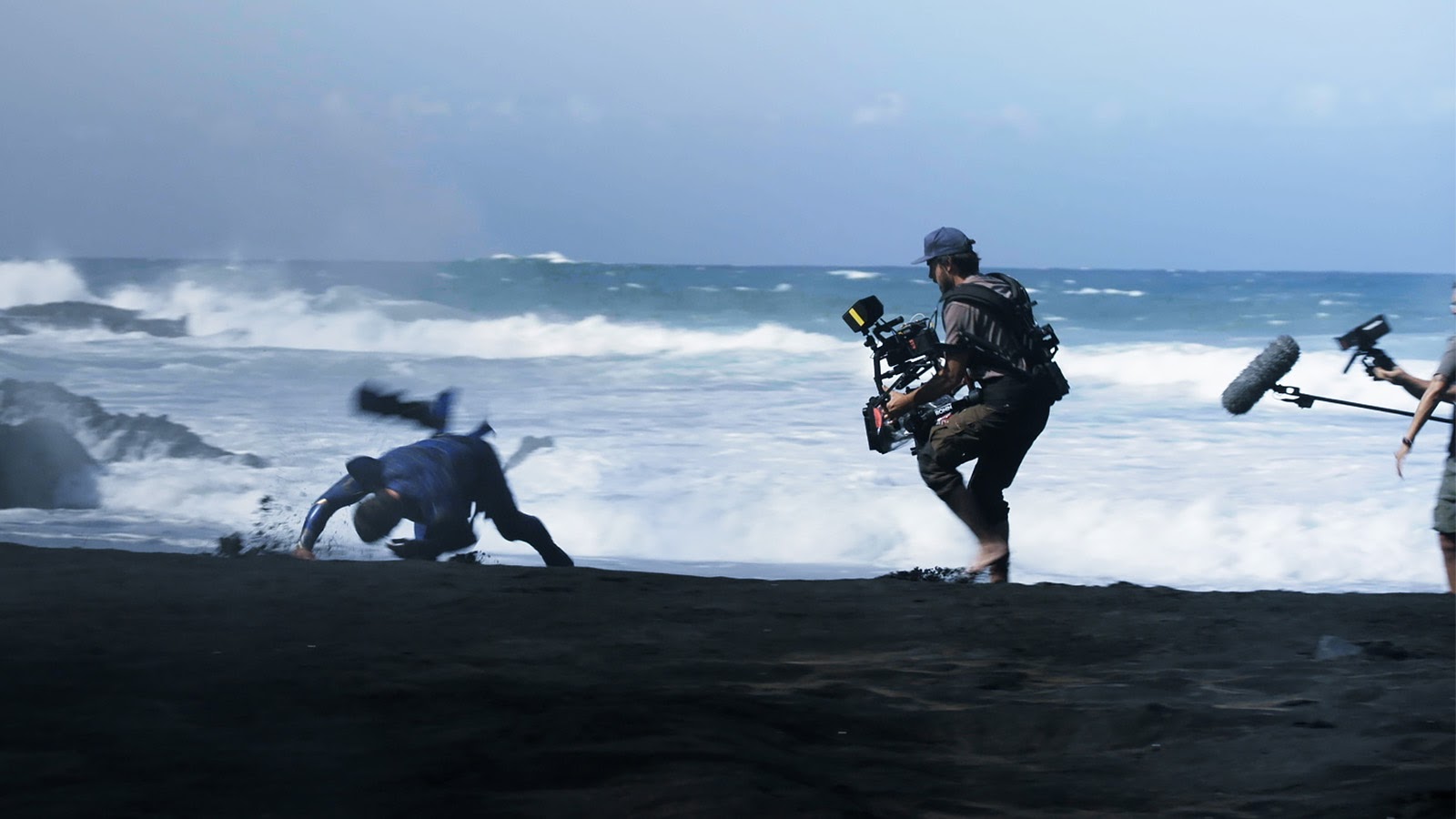
TICHENOR: Often we’ll run into each other’s rooms. We check with each other how we were intending for parts to go.
WOOD: I would run into Dylan’s room, but Dylan would get Christina [Mar] to Slack me [laughs].
TICHENOR: This is not true. One of the reasons is that I sometimes work with my monitoring level down a little bit and my door closed because it helps me concentrate. Craig works at full level with his door open all the time. So, in fact, I knew exactly what Craig was doing so I didn’t have to go down there.
WOOD: I like for everyone to be involved. I do it because of that. I actually like to be interrupted by assistants. We didn’t have our assistants with us much on this show, and I miss that. I like someone interrupting me.
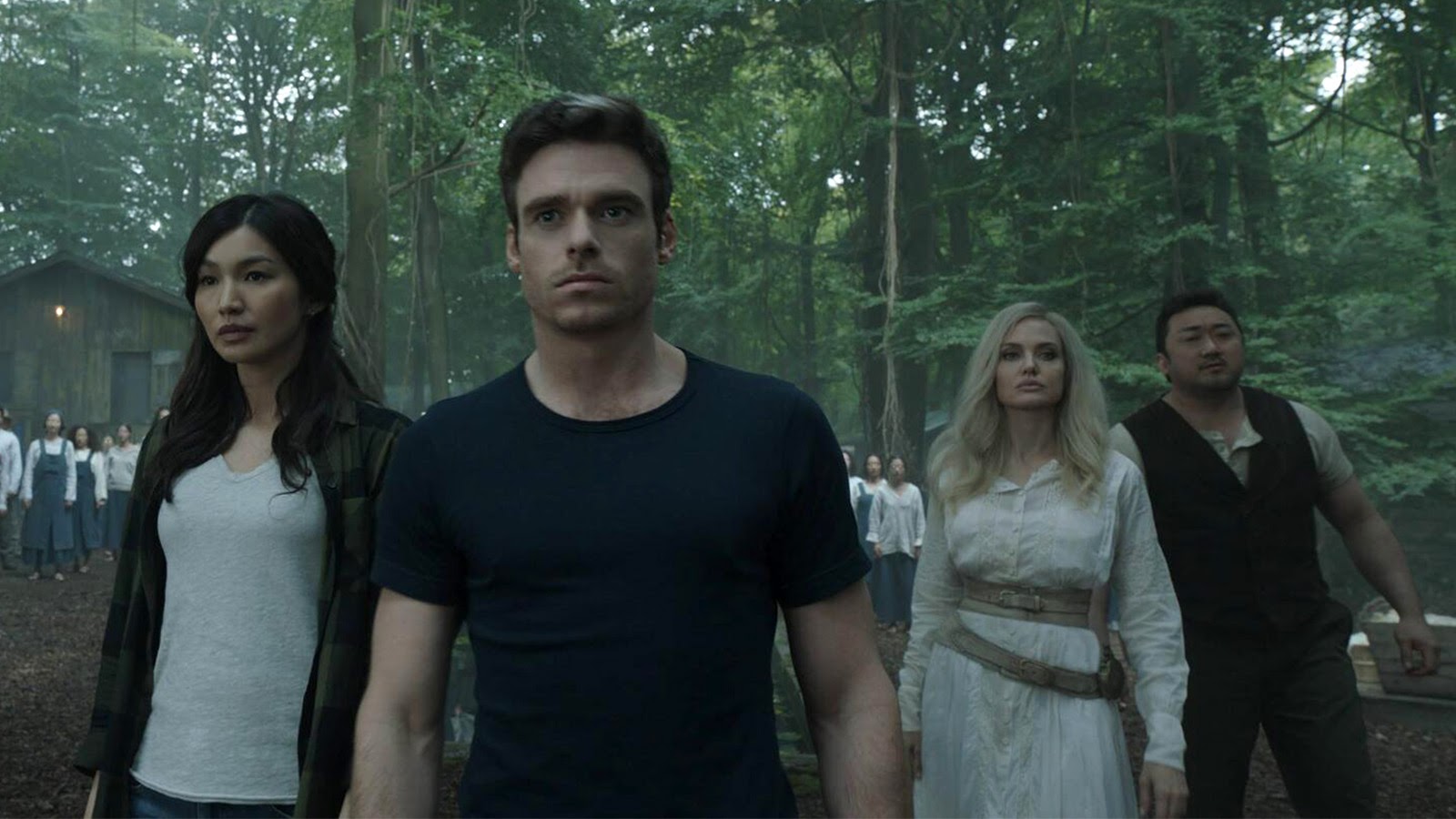
TICHENOR: We had a Zoom channel that was called “The Hallway” which was basically all the assistants, music editors, and others just on a Zoom that stayed up all day long. We could jump in and out as we wanted. Craig would just leave it on all day long.
WOOD: I just left it on with my camera running, and I could talk to any of the assistants in real-time like you normally do.
HULLFISH: This movie was literally edited on a two-year-long Zoom call?
WOOD: Absolutely.
TICHENOR: Yeah, many Zoom calls. Marvel’s process for that is the executives come in the cutting room and go through scenes and reels at least twice a week. So, we kept that up remotely.
WOOD: I remember the first time Kevin [Feige] was able to come back in person for an editorial session. He was in such a good mood and he was so happy to be back with us in editorial.
TICHENOR: And we were happy too. It was fun to be in person.
HULLFISH: Do you guys remember how long the first cut of the film was as you came out of dailies?
TICHENOR: It was seven hours long, Steve. [laughs].
HULLFISH: That is not true [laughs].
WOOD: It was a little over four hours, I guess.
TICHENOR: Yeah, and then we quickly got it to three and a half. I remember talking to Tim Squyres once and saying my most anxious time on a film is the editor’s cut in dailies because the possibilities can be endless depending on the movie and the footage.
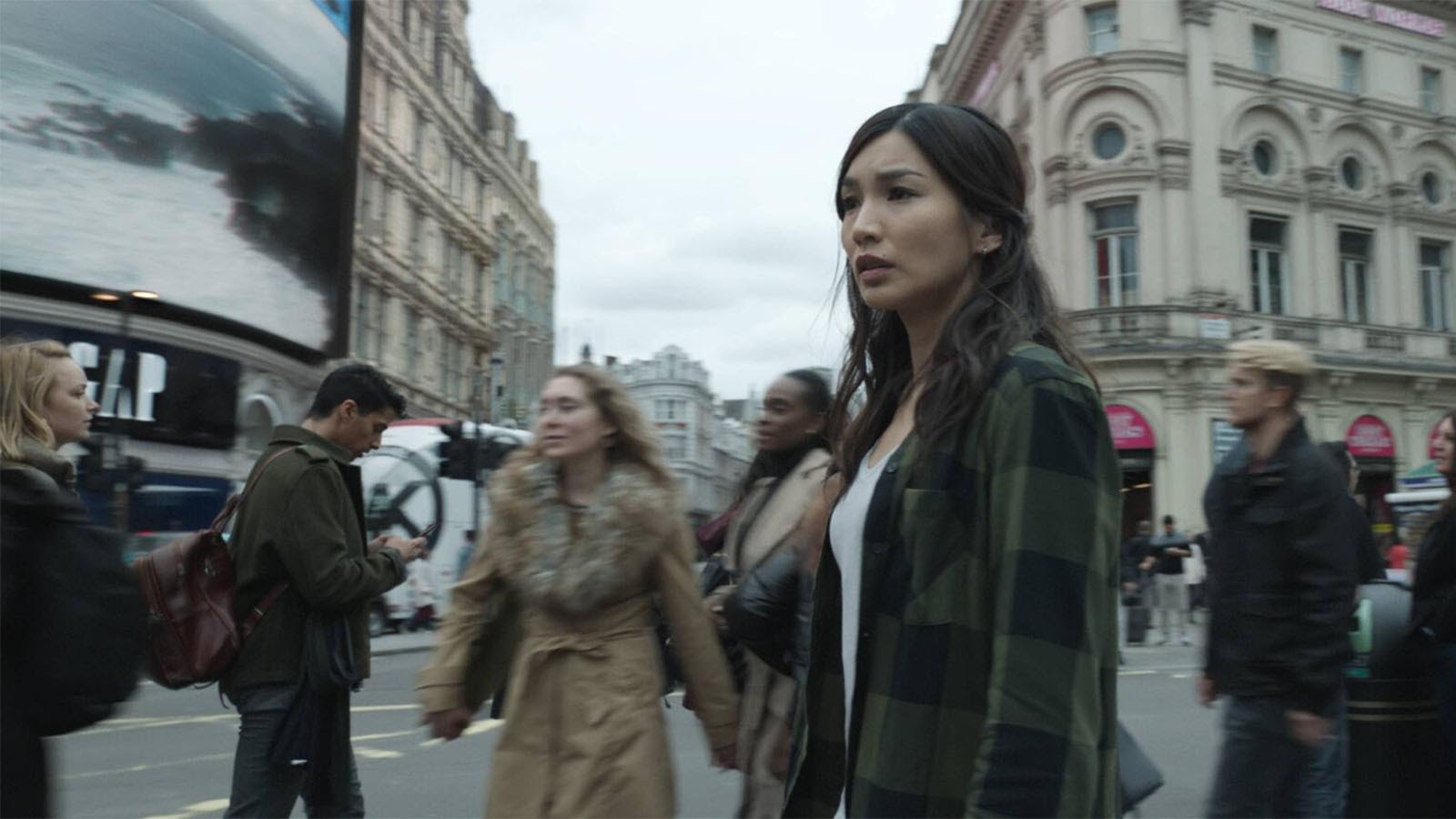
And the same location in real life.
Often, we’re deciding how to start a scene, how to end the scene, what performances to use, what things to accentuate, or what things to de-accentuate. Often 90 percent of those decisions carry through the whole movie to the end. You’re making decisions that affect how people even interpret the movie. Then, Tim said, “My favorite part is the first cut because the possibilities are endless.” So, we agreed, but we had the opposite opinion.
I quite like fine cutting after we’ve decided what we’re doing and now we’re just making it better and better. It’s more about sculpting and amping the joy of cinema up rather than pulling my hair out trying to solve issues. I love that too, but it’s a much more stressful period.
HULLFISH: Talk to me about safeguarding the quieter, slower moments of the film. As we’ve talked about, that’s what makes you care about what happens in the big explosive moments.
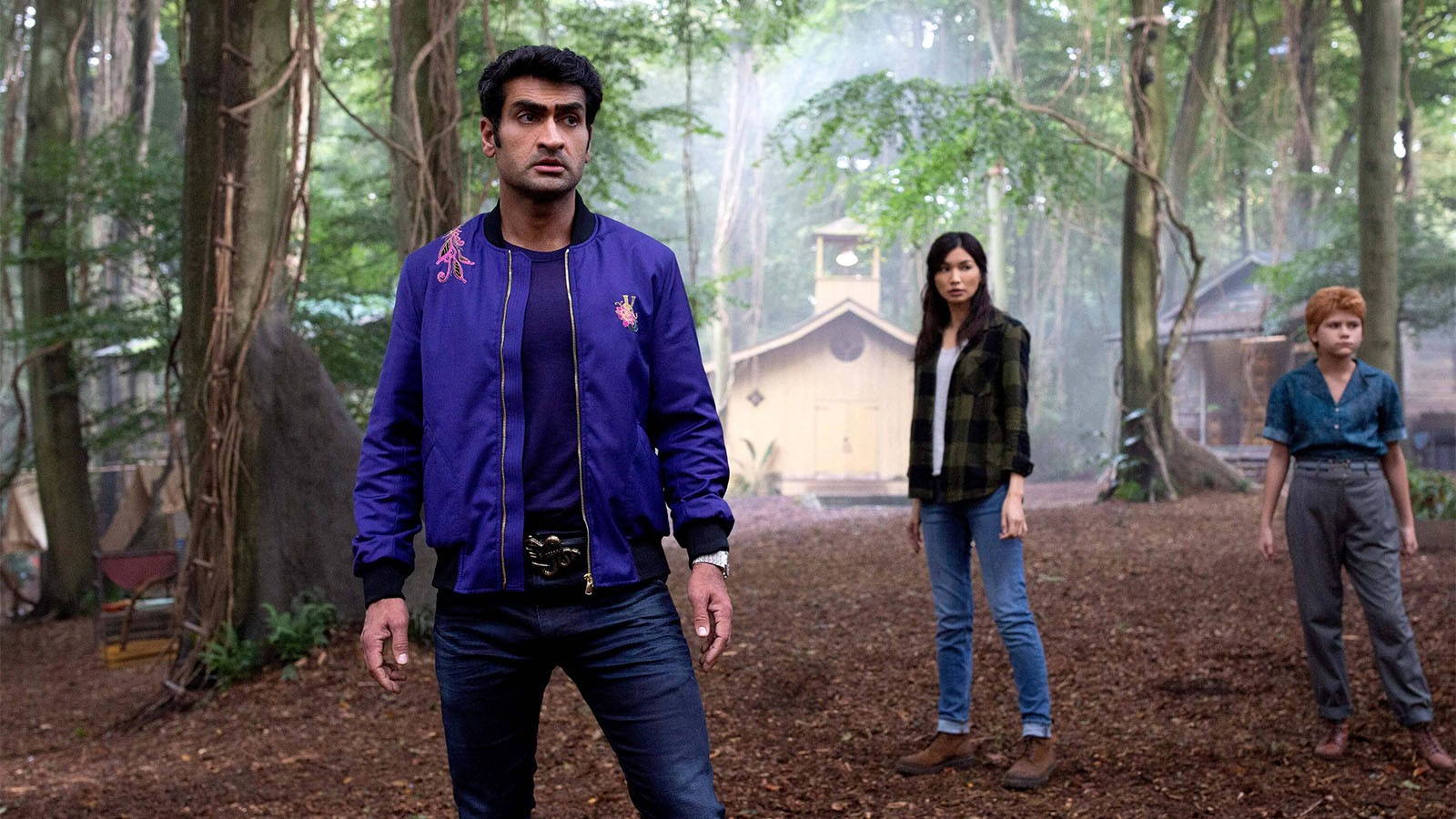
WOOD: It’s just about whether you miss them or not. You’ve got to just feel the movie. If you’ve taken too much out, you realize, “I’m not feeling anything anymore.” You’ve just got to feel it.
TICHENOR: People call it slow when it’s dialogue rather than punching and flying, but that’s not slow to me. If the story and ideas are moving, hopefully that’s not slow. The challenge is to keep people paying as much attention to what’s being said in the back-and-forth character moments.
When people are being slammed up against walls and volcanoes are exploding, they’re both almost equally effectual in how the plot turns out and what’s going on, and it should be. That’s the idea. So, with this movie, and often with movies where you have a slower pace in sections, the challenge can be picking your babies. It’s always a balance.
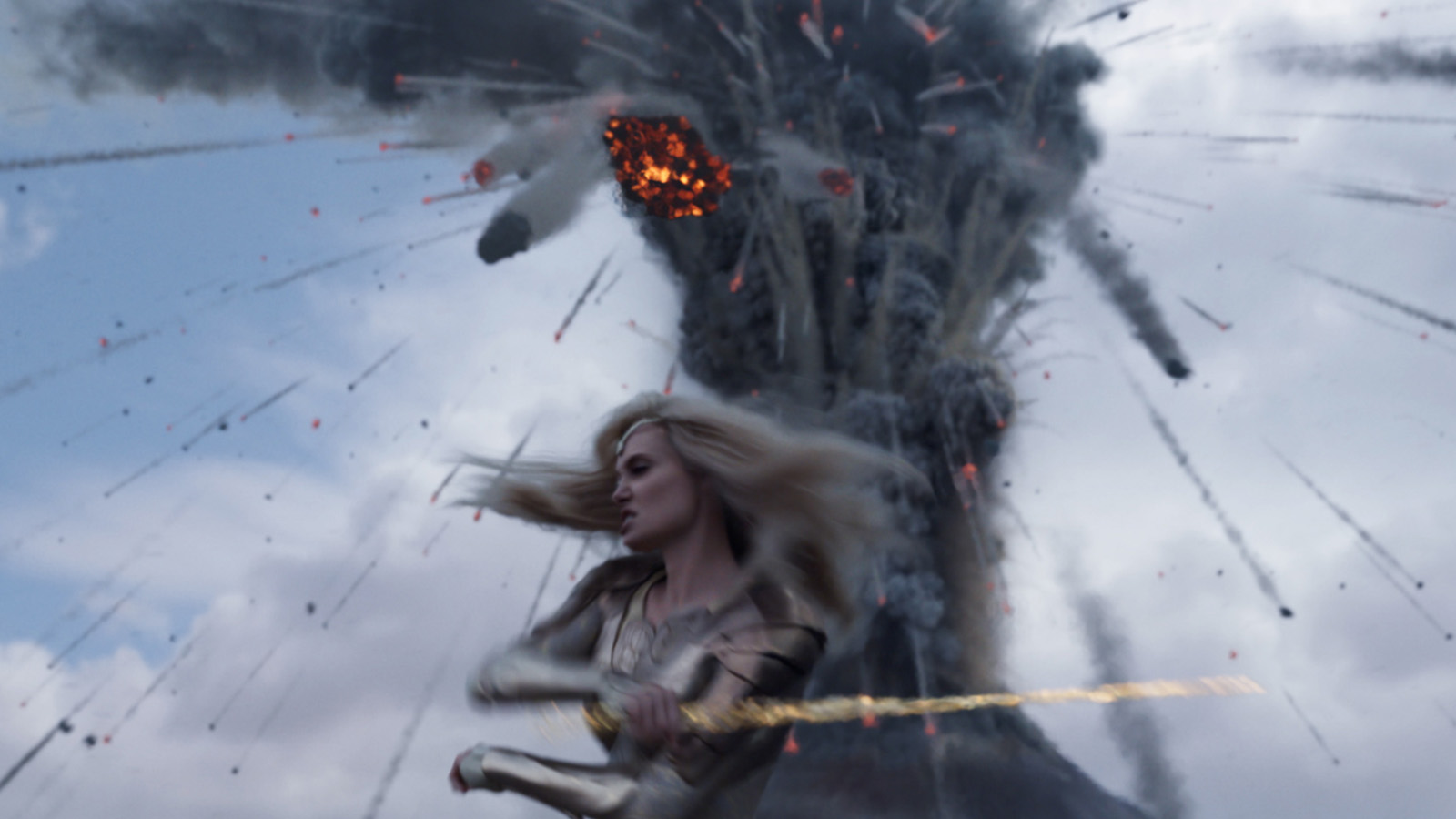
For example, Sersi as a character doesn’t have the proper arc if we don’t see a sacrifice that she’s made in order to lead. It’s faster and you’ll feel better in reel seven, but by the time you get to the end of reel eight, it won’t work.
WOOD: It won’t feel as good in the action.
TICHENOR: Once she gets down to having to make that decision, you don’t care anymore because her character hasn’t been set up. That’s a very important and sophisticated issue with editing that I think a lot of people don’t get when they’re watching a movie, and they shouldn’t because it’s our job. It is often a very delicate balancing act.
WOOD: I feel that action can be slow if it’s not feeling like it’s advancing the story at the same time. So, if you haven’t set up your character’s to care, and you don’t check in on your characters during the big action finale in a way that’s adding to them, then you’re not going to care about the action, so then that’s going to feel slow and boring.
HULLFISH: Craig, even after editing Guardians of the Galaxy and multiple Pirates movies, you’ve edited several short films. What does that do for you and why do you cut shorts?
WOOD: Because it’s fun.
TICHENOR: Because it only takes a week. No, I’m just kidding.
WOOD: There were a couple of shorts from people that I wanted to work with for various reasons, but it’s also a brief form of storytelling. It’s the same as when I used to work in commercials; you learn your skills of telling stories in very brief ways. “What is really the most important thing to tell this story?” It teaches you efficiency.
TICHENOR: Shorts can also be very fun because, like short stories, they’re often only one act, really. You’re not doing the three-act structure, or four or five. It often ends with a revelation and a summing thought that’s a little open-ended. So, I find you walk away thinking a lot more from a short, sometimes.
HULLFISH: Dylan, I noticed that you were the second unit director on a film. That’s a role that I’ve seen filled by editors multiple times. Why have an editor as a second unit director?
The editor not only knows the style of the film but can also be very clear in knowing, “I need these three shots and I need it to look like this.
TICHENOR: The editor should know the material that the movie needs and can get efficiently to the verb, as it were. The editor not only knows the style of the film but can also be very clear in knowing, “I need these three shots and I need it to look like this. No, not a 35mm. This is a 24mm, and it’s close. We don’t need to see her and she doesn’t need to exit frame.” We’re very clear about what needs to happen. Technically, that’s the reason that editors often are a good choice for that.
WOOD: It seems to me that also when you’re in the middle of cutting the film you realize that you need a bunch of things that have not been shot yet. You’ve talked to the director about that and they say, “Go and get them.” So, you become the second unit director.
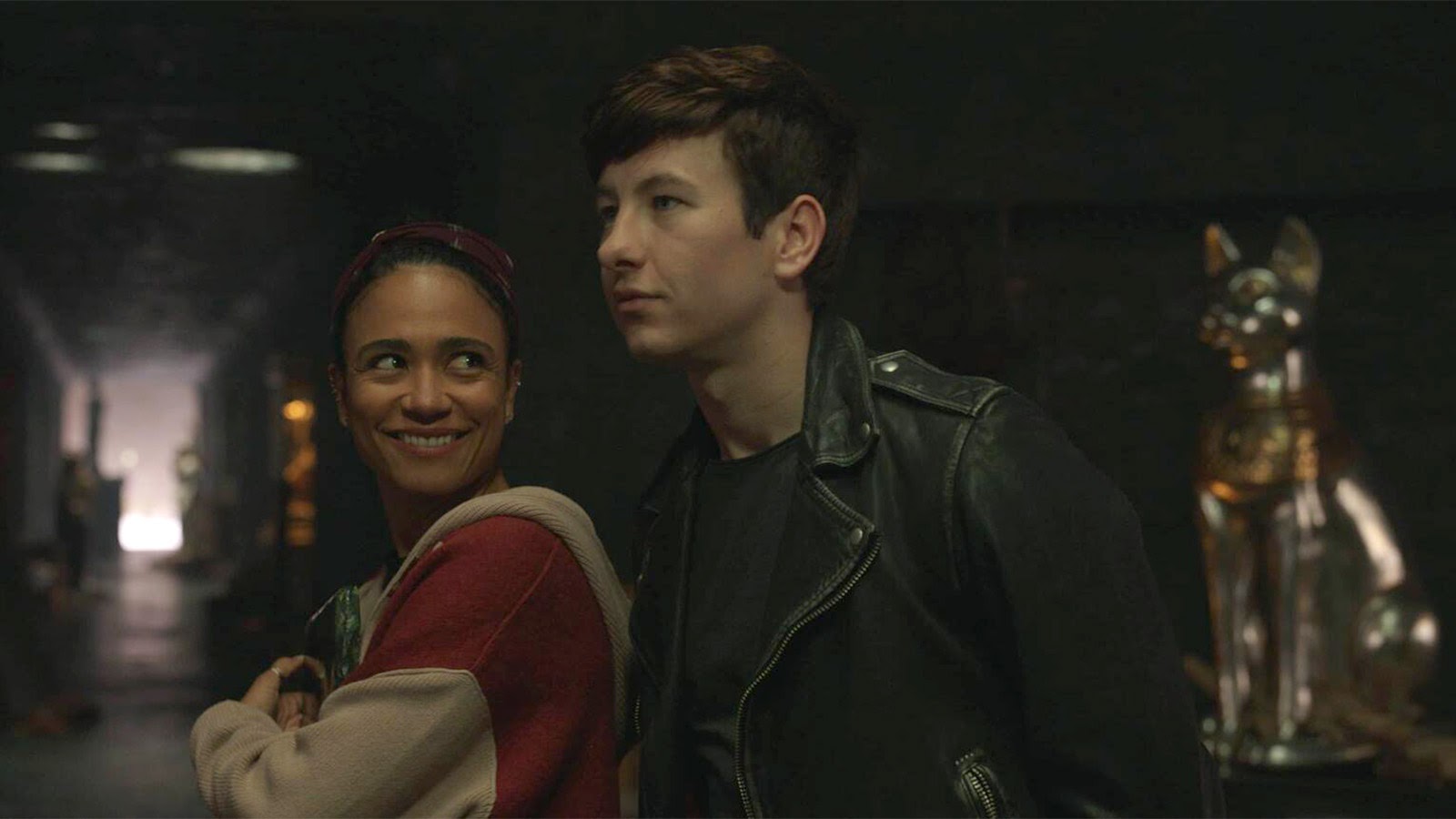
TICHENOR: That’s what happens. I’ve done it on many films to varying degrees. I shot all the action on this little movie that I did with Drew Barrymore that was all roller derby stuff, and that was just all the action. First unit shot with the principal actors, and then I did everything else with the stunt people, and that wasn’t worked out at all. We just devised it as we went.
As the editor who had assembled the principal photography, I knew what I needed; I need skates doing this, I need the scoreboard doing that, I need her to go by fast, and I need a backshot here. It’s not always just the little bits that drop in. It’s also sometimes big chunks of things, and the editor happens to know what’s going on.
HULLFISH: You know what you want, right? It’s like you’re saying, “I know this piece that’s missing,” or “I know how this has to work out,” and if the director’s not there to do it, the next person in line as far as I’m concerned is the editor.
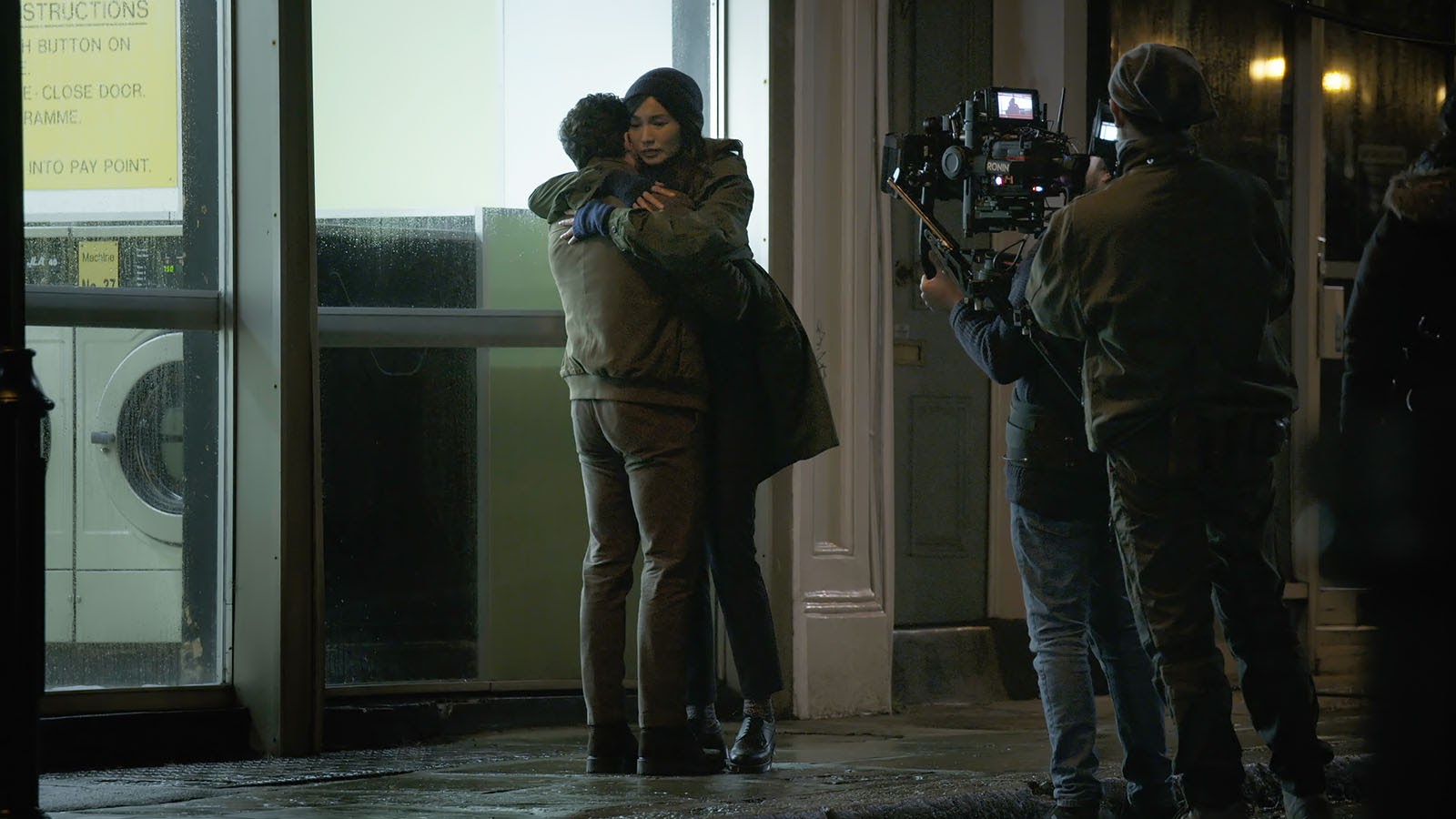
TICHENOR: Yeah. Sometimes you’ll be in competition with the production manager who also wants to do second unit, but then in my experience, I end up on set anyway because they realize, “Wait, what are we trying to do here?”
HULLFISH: Guys, thank you so much for joining me, and congratulations on a great film.
WOOD: Thank you, Steve. This was fun.
TICHENOR: It was a pleasure. Thank you.

